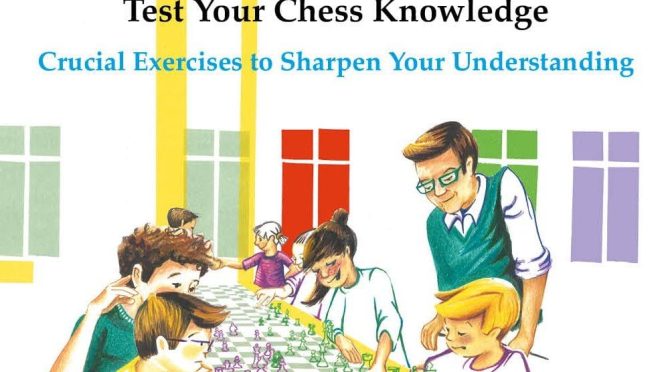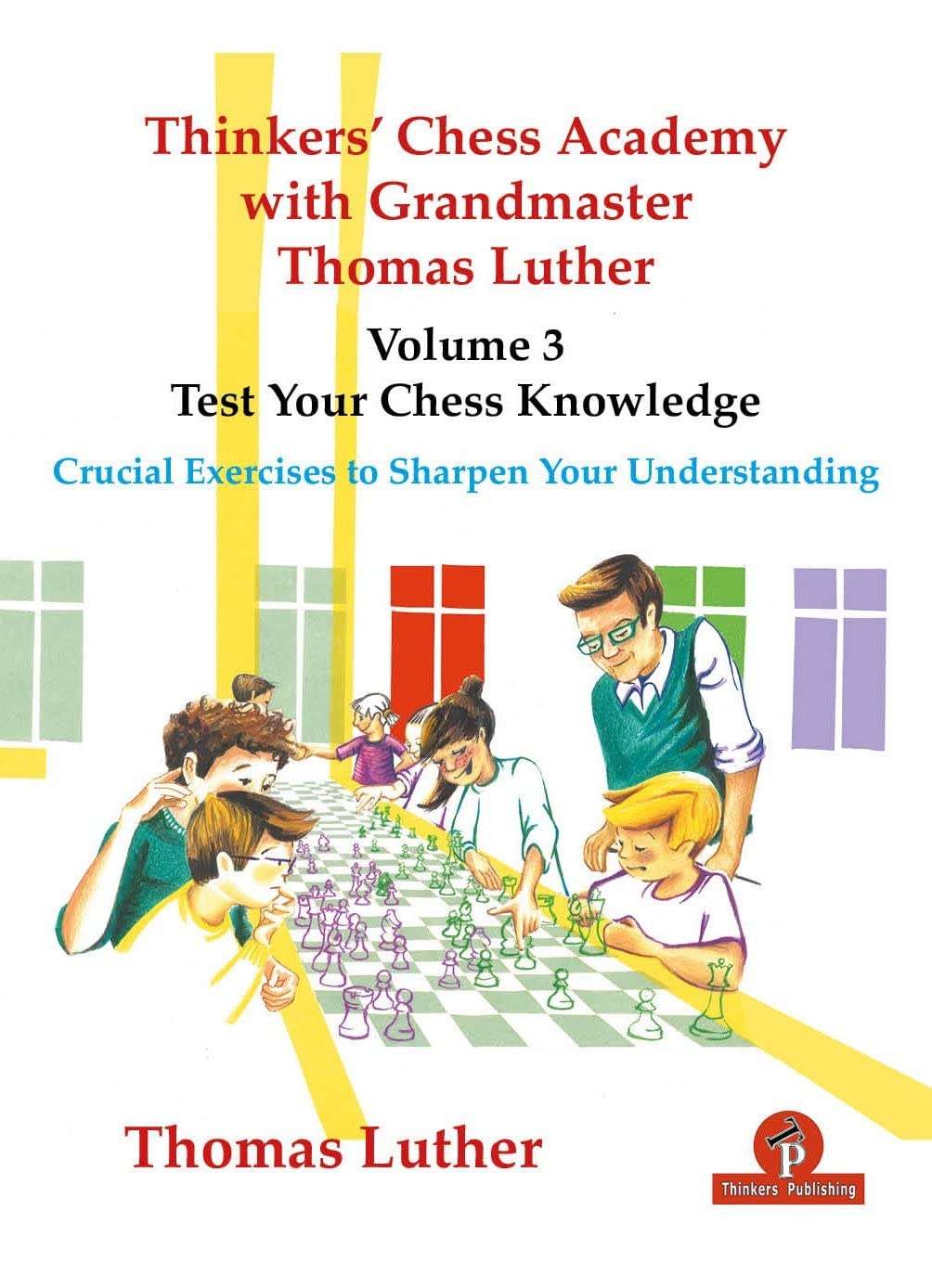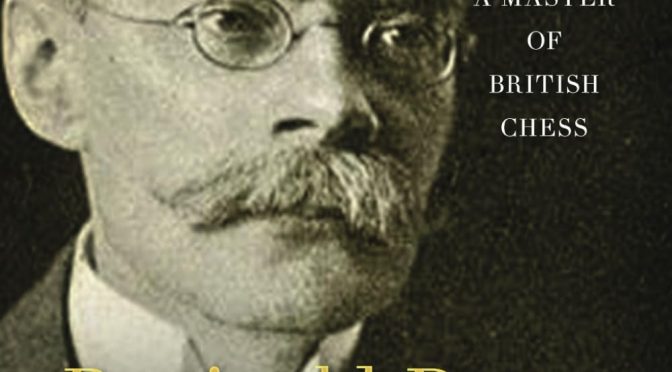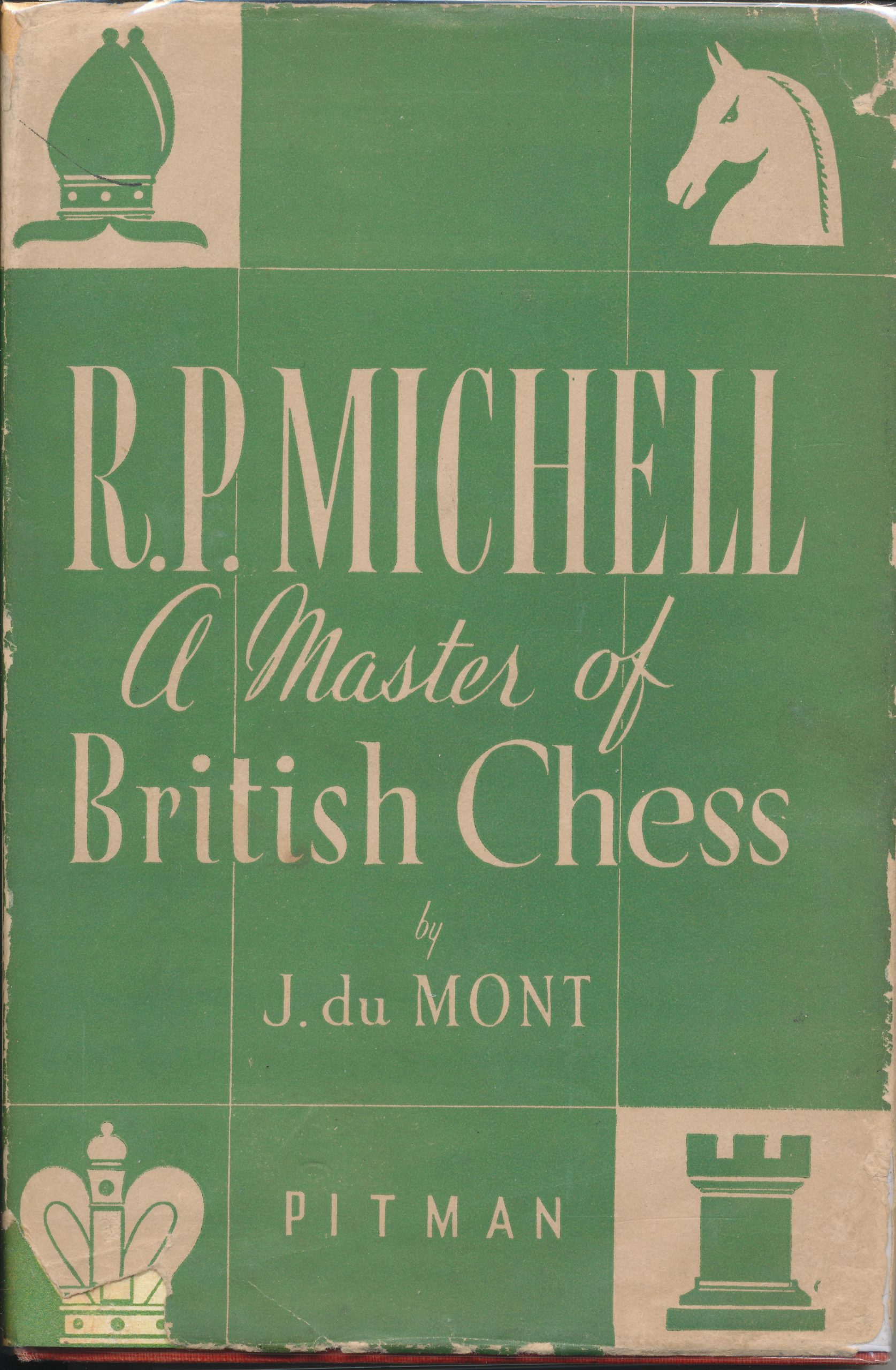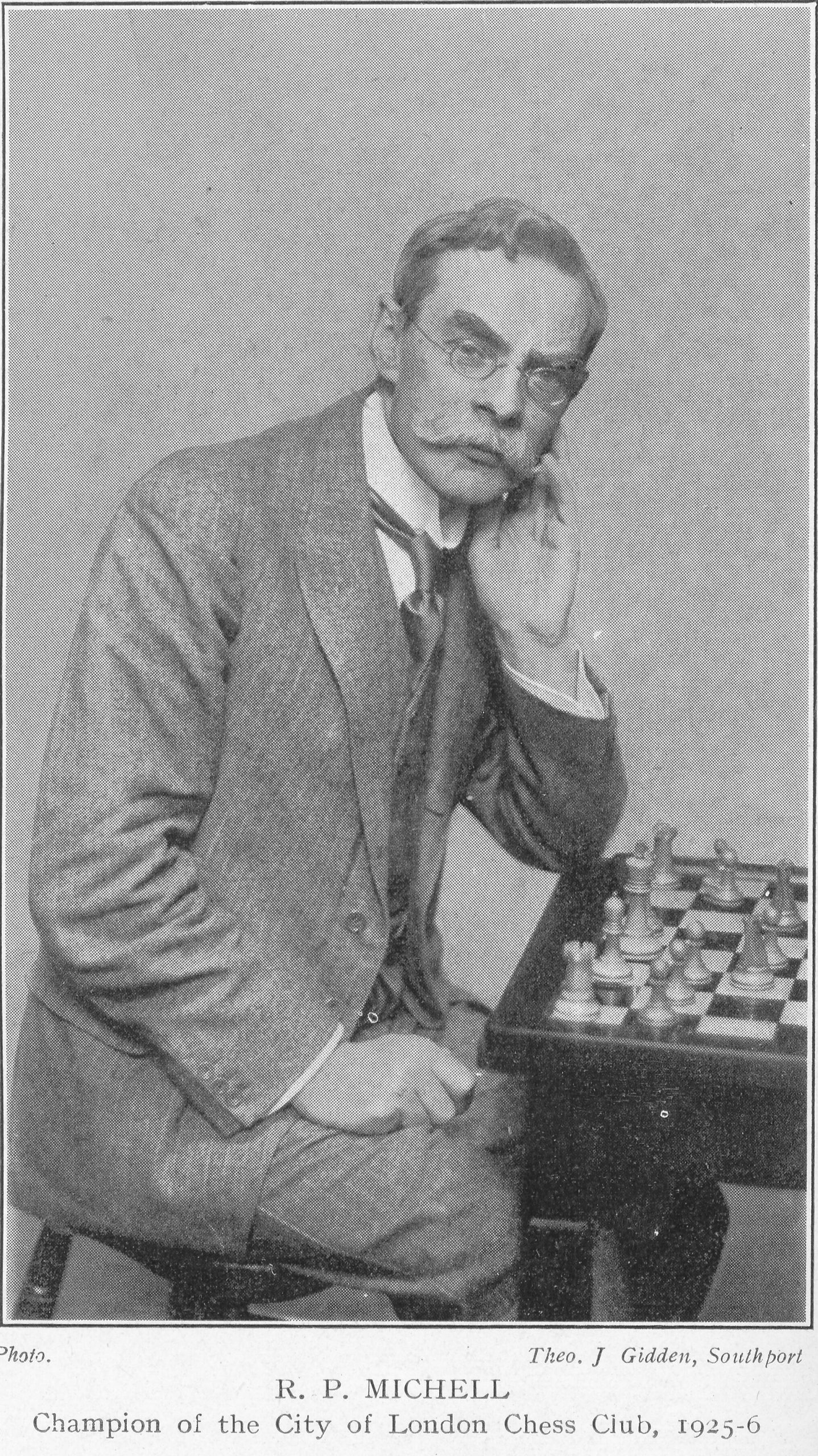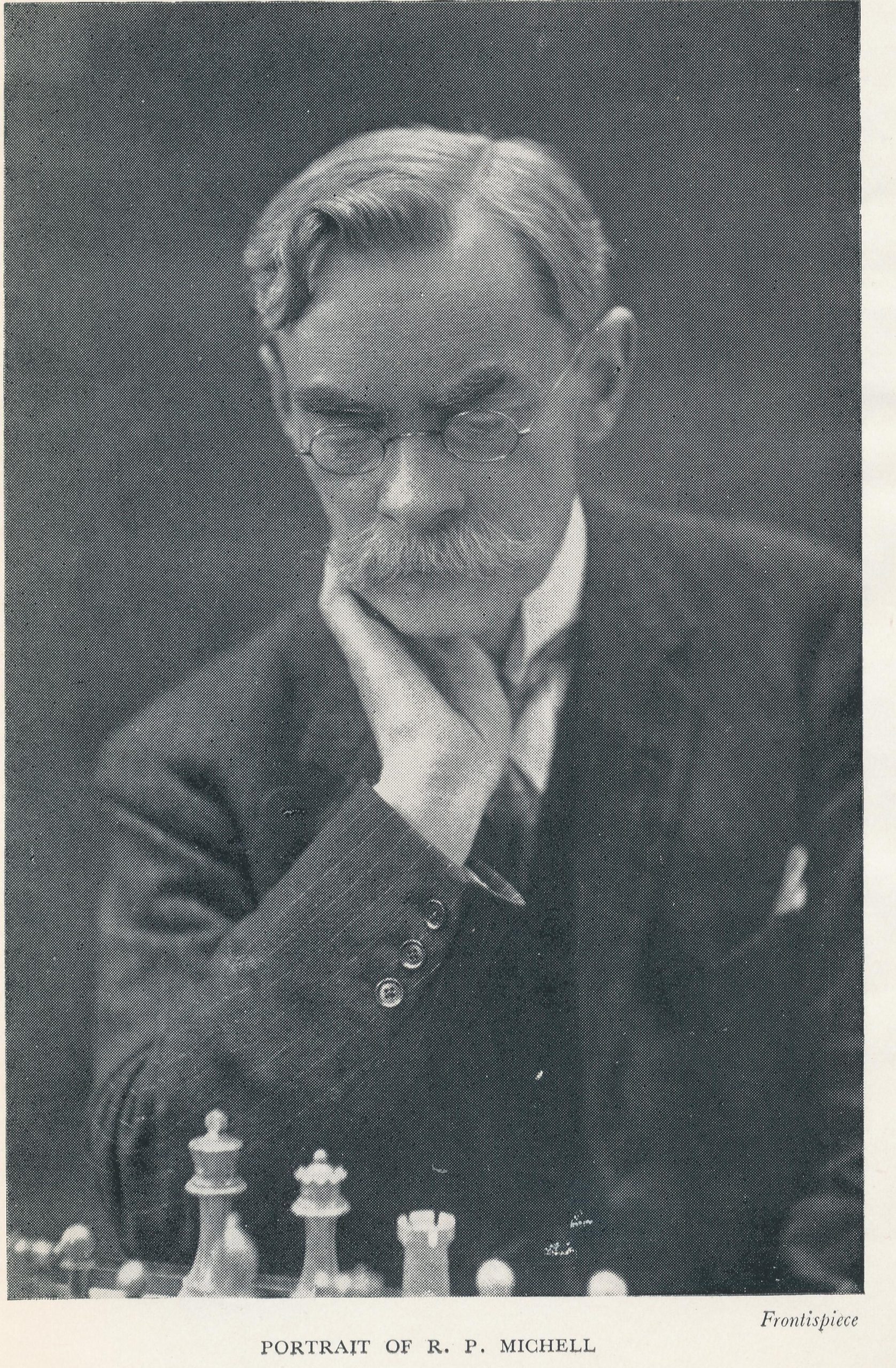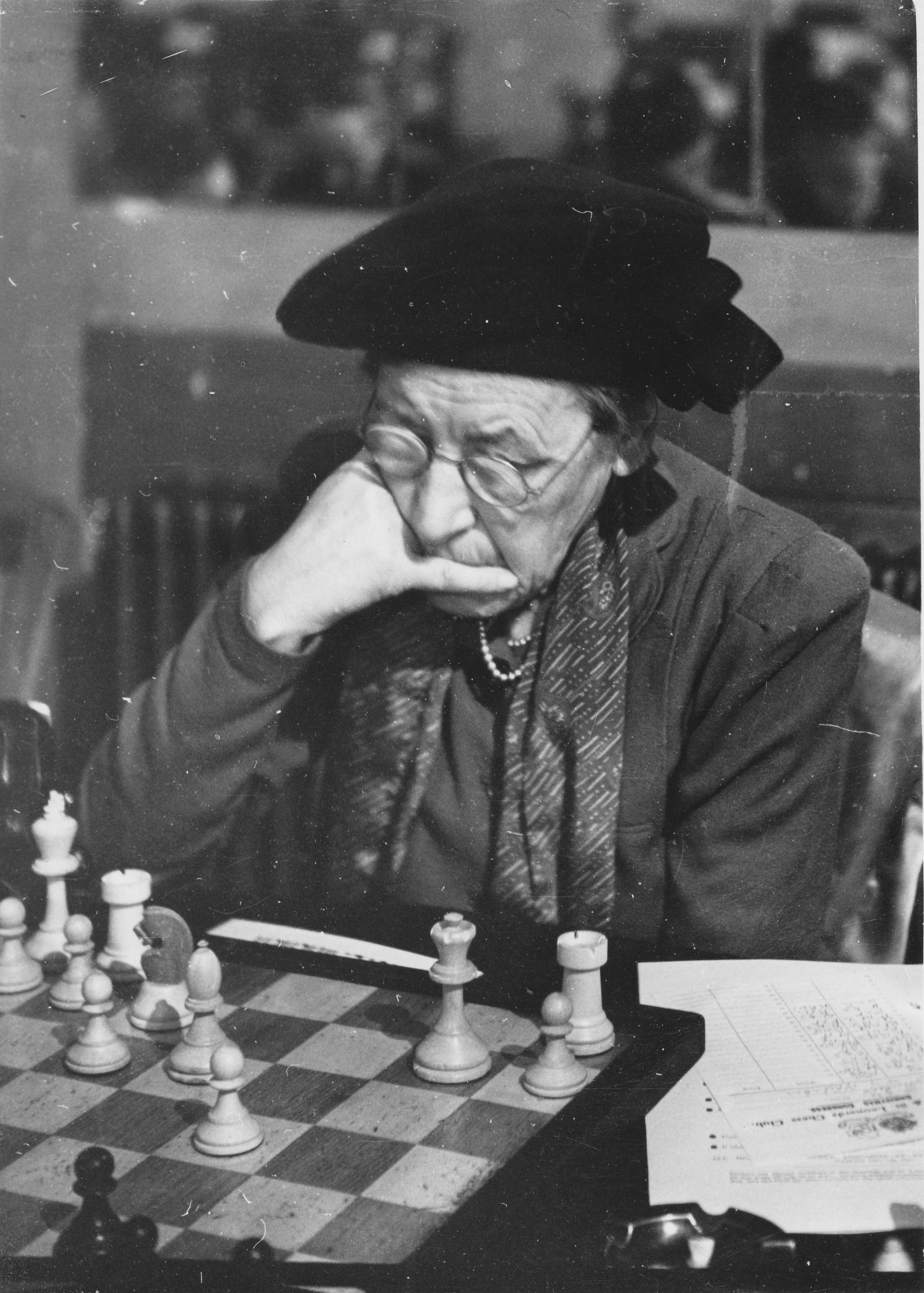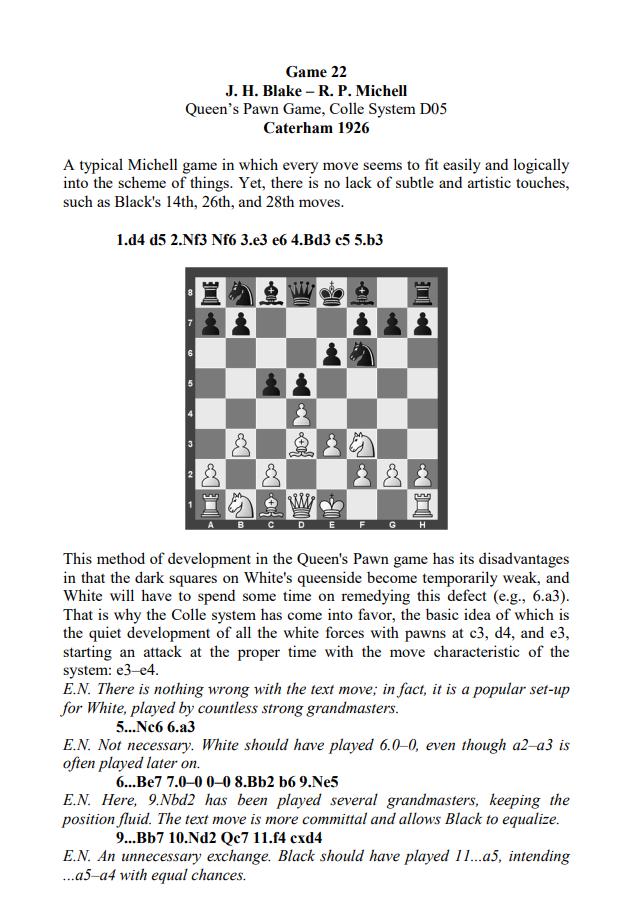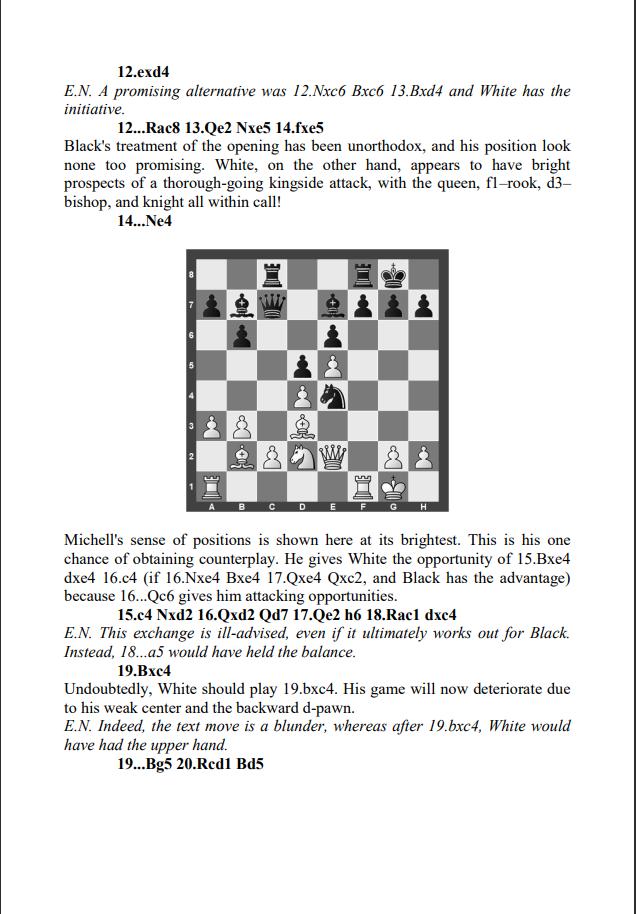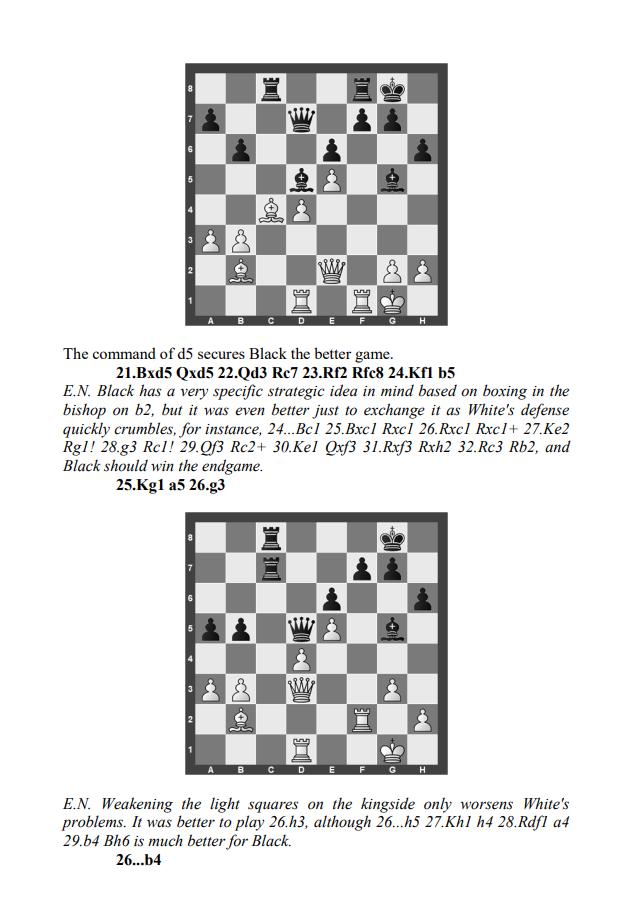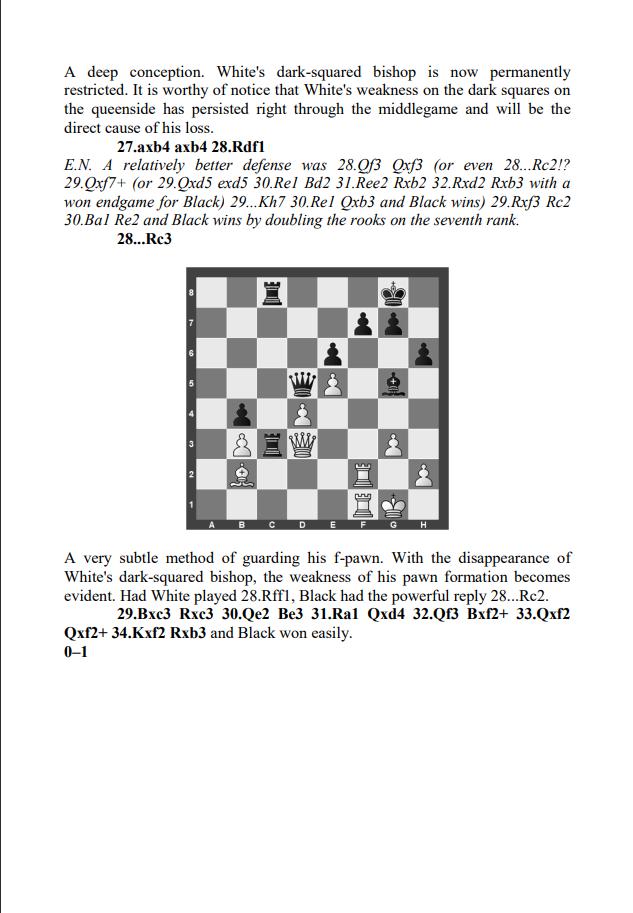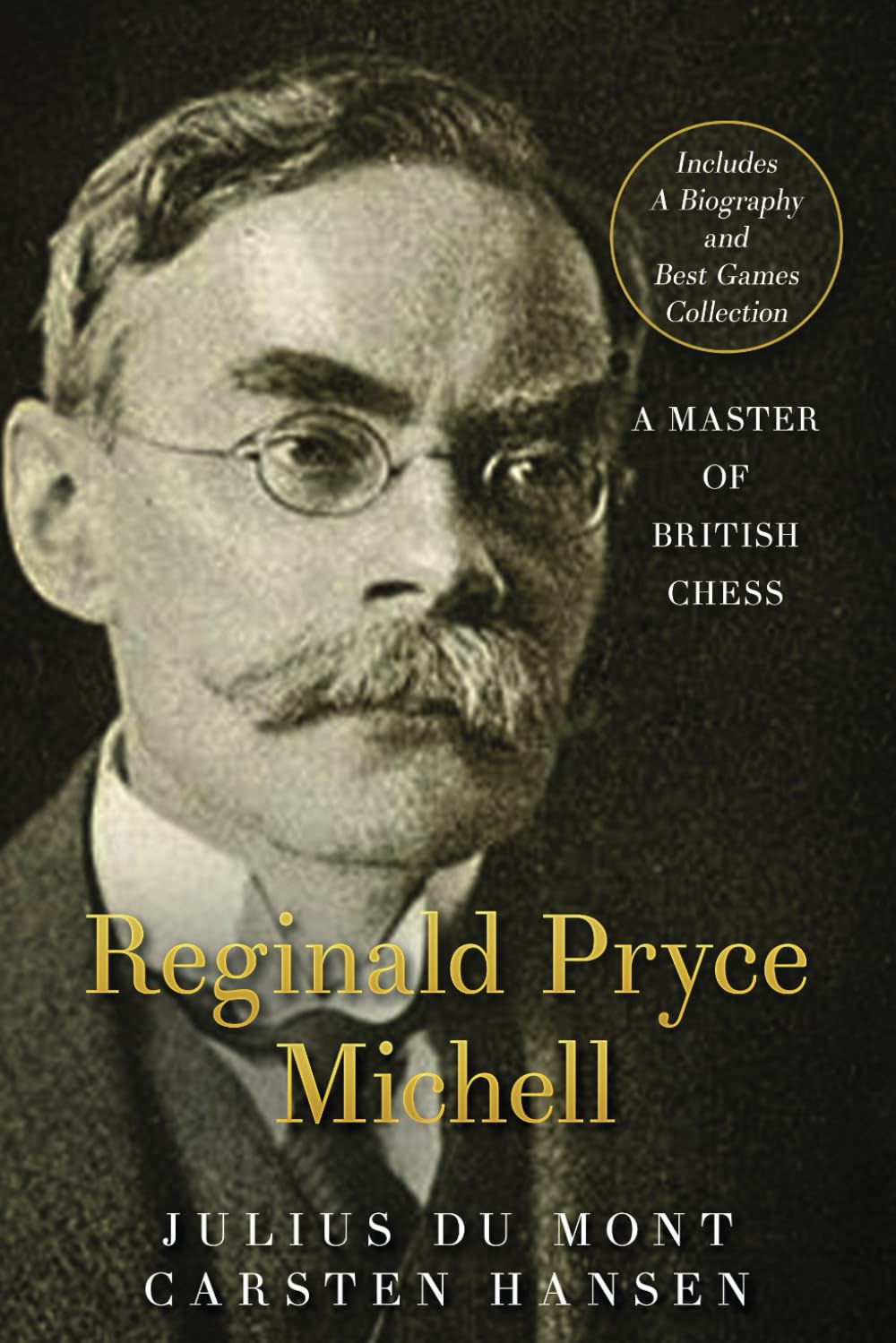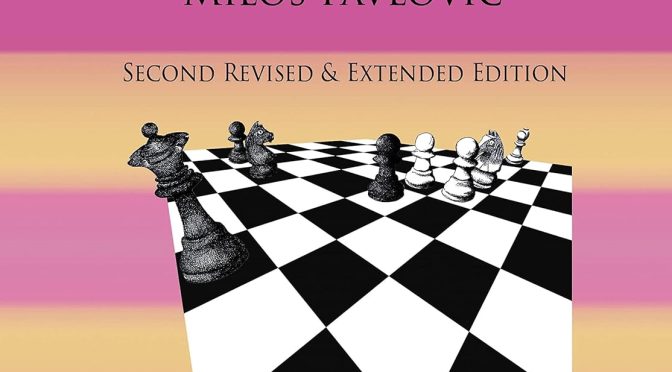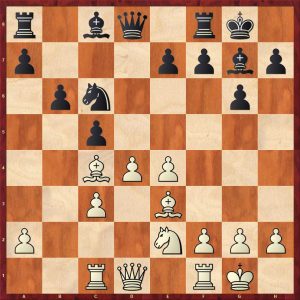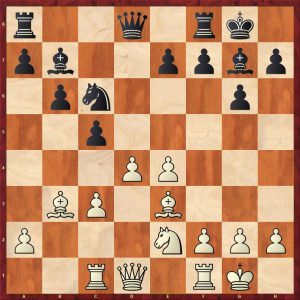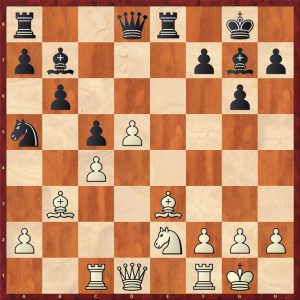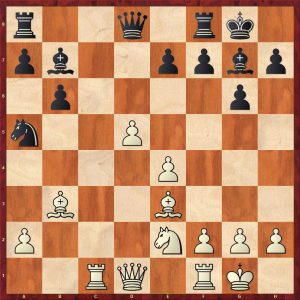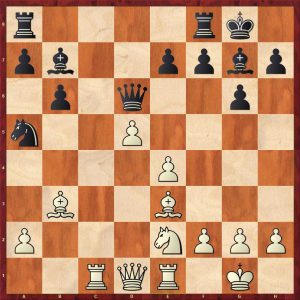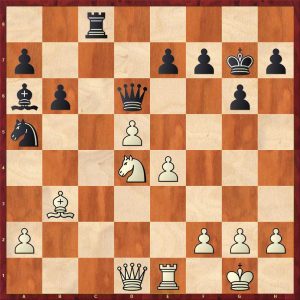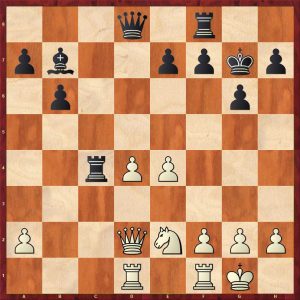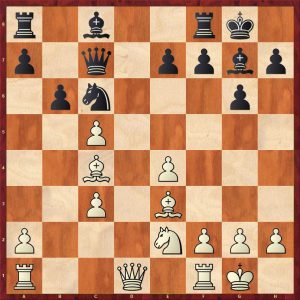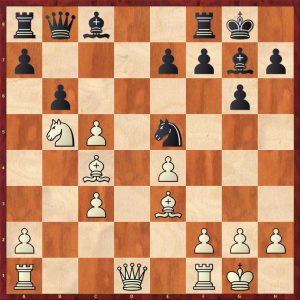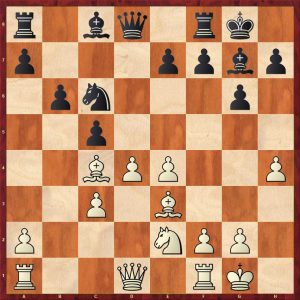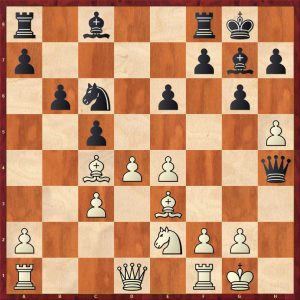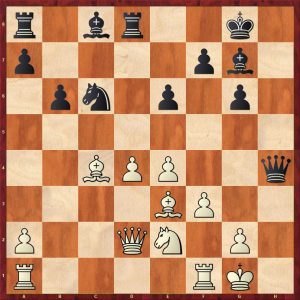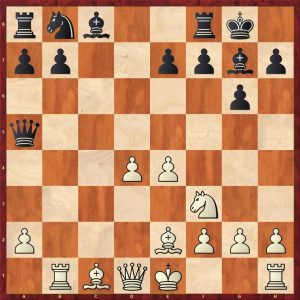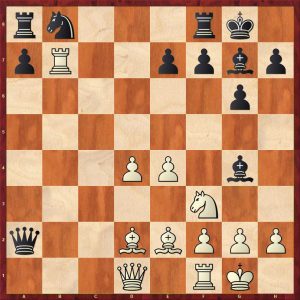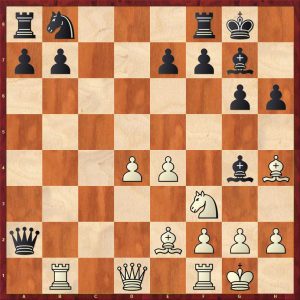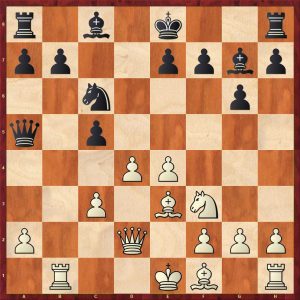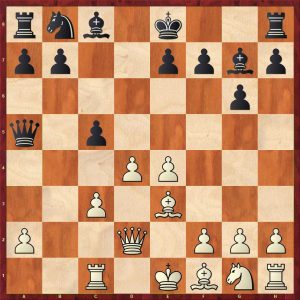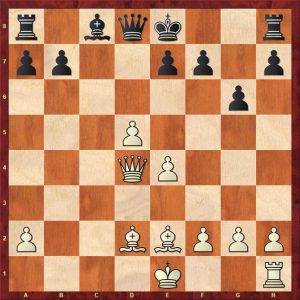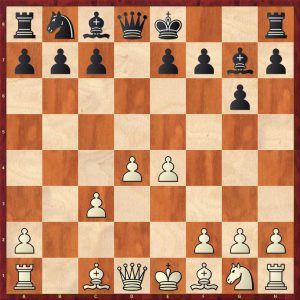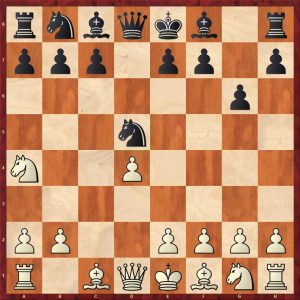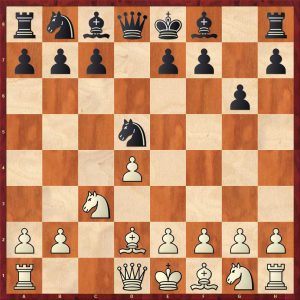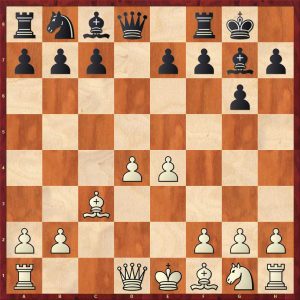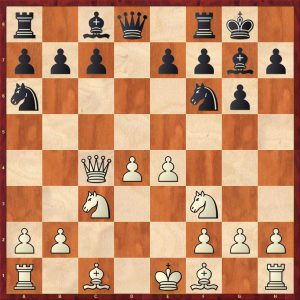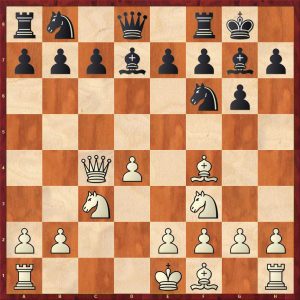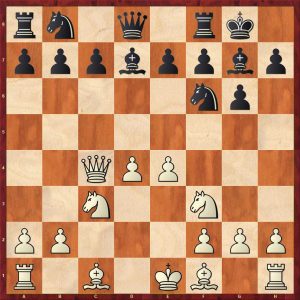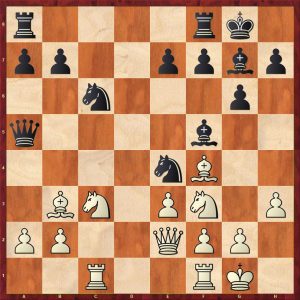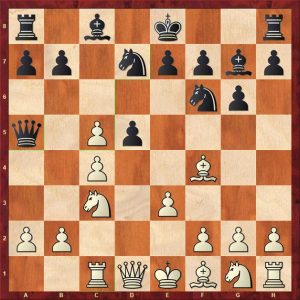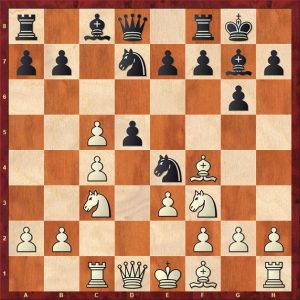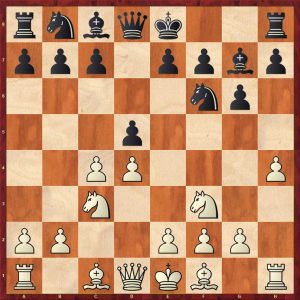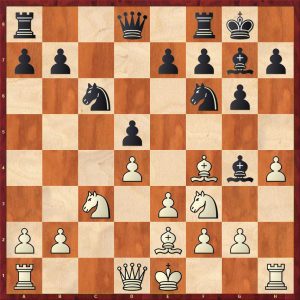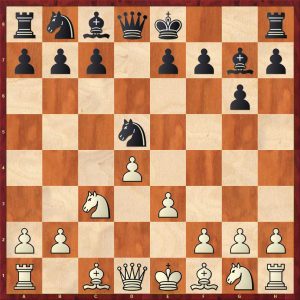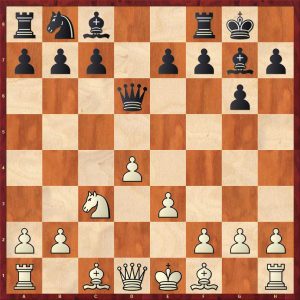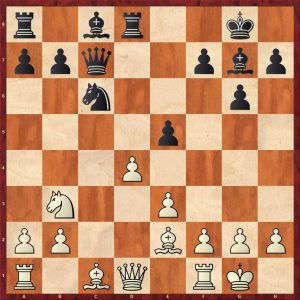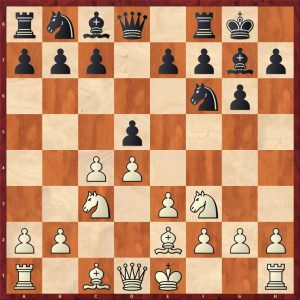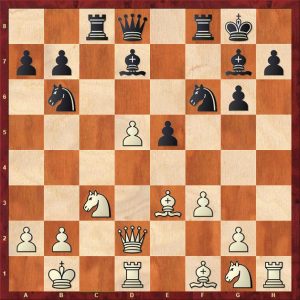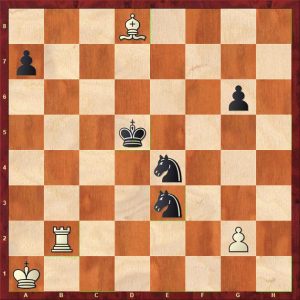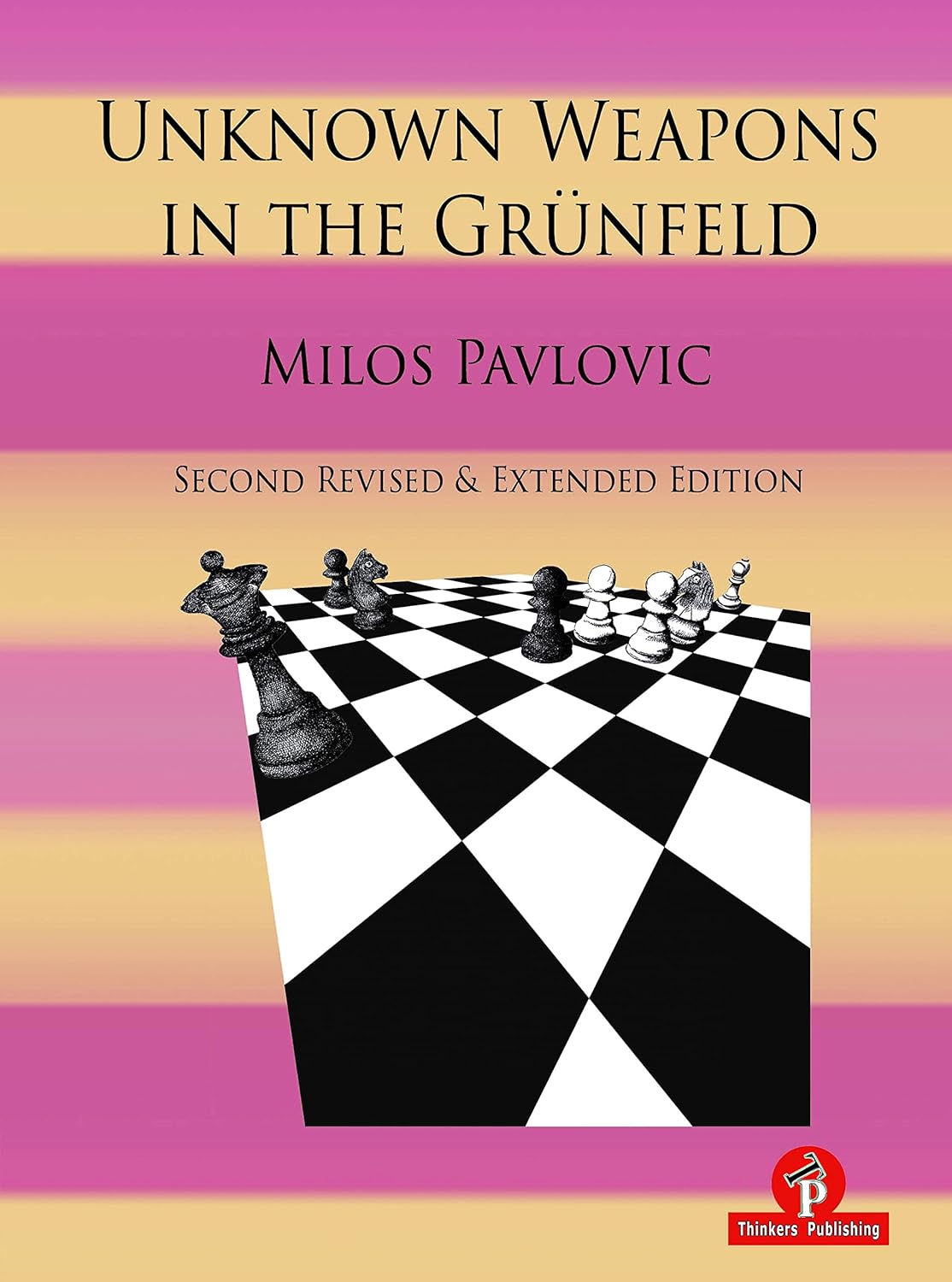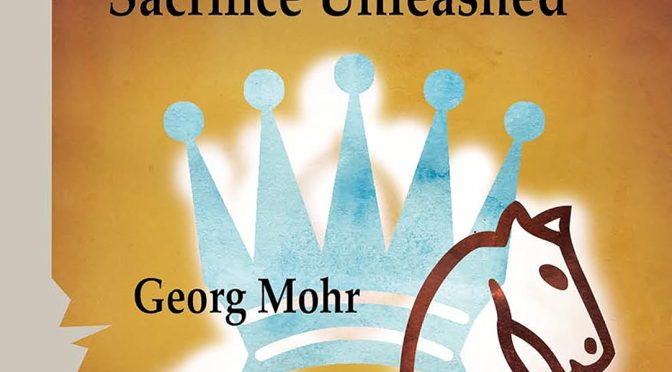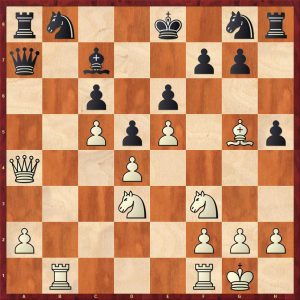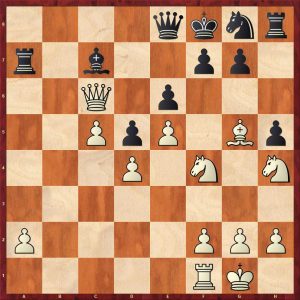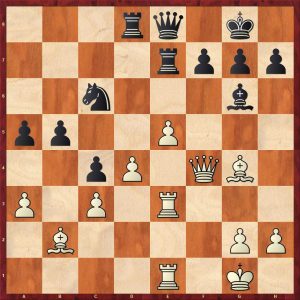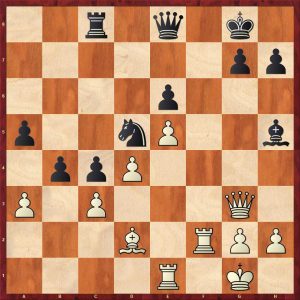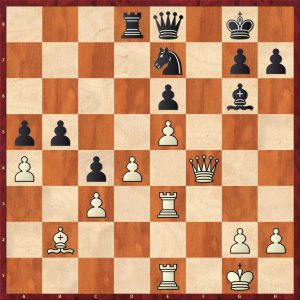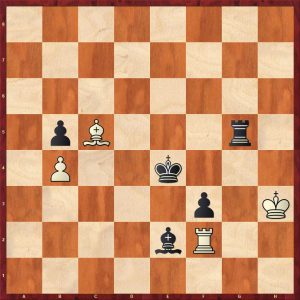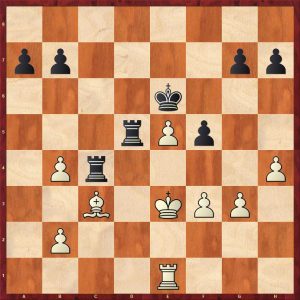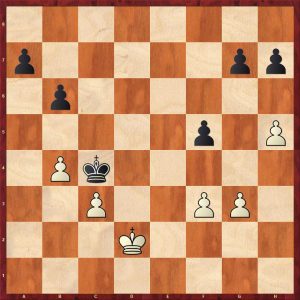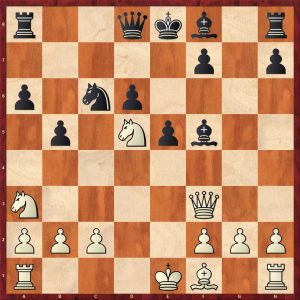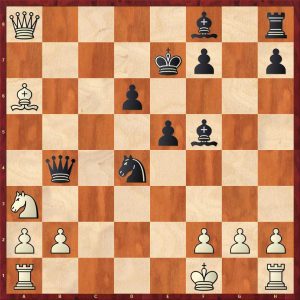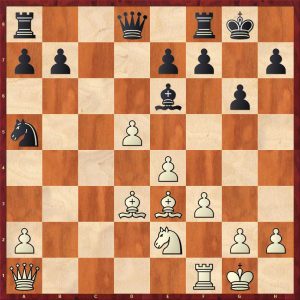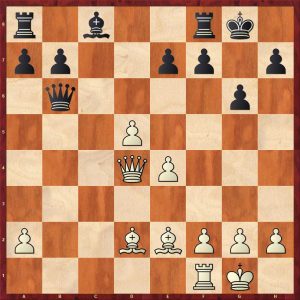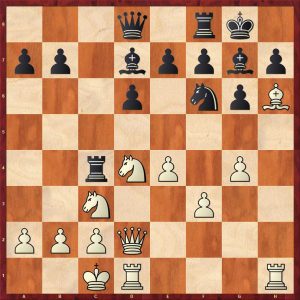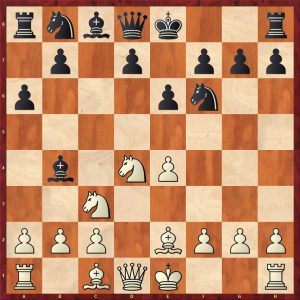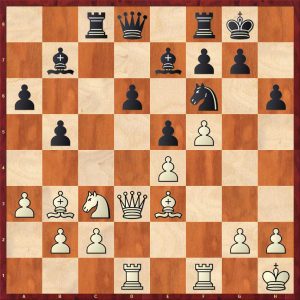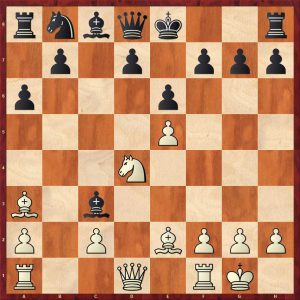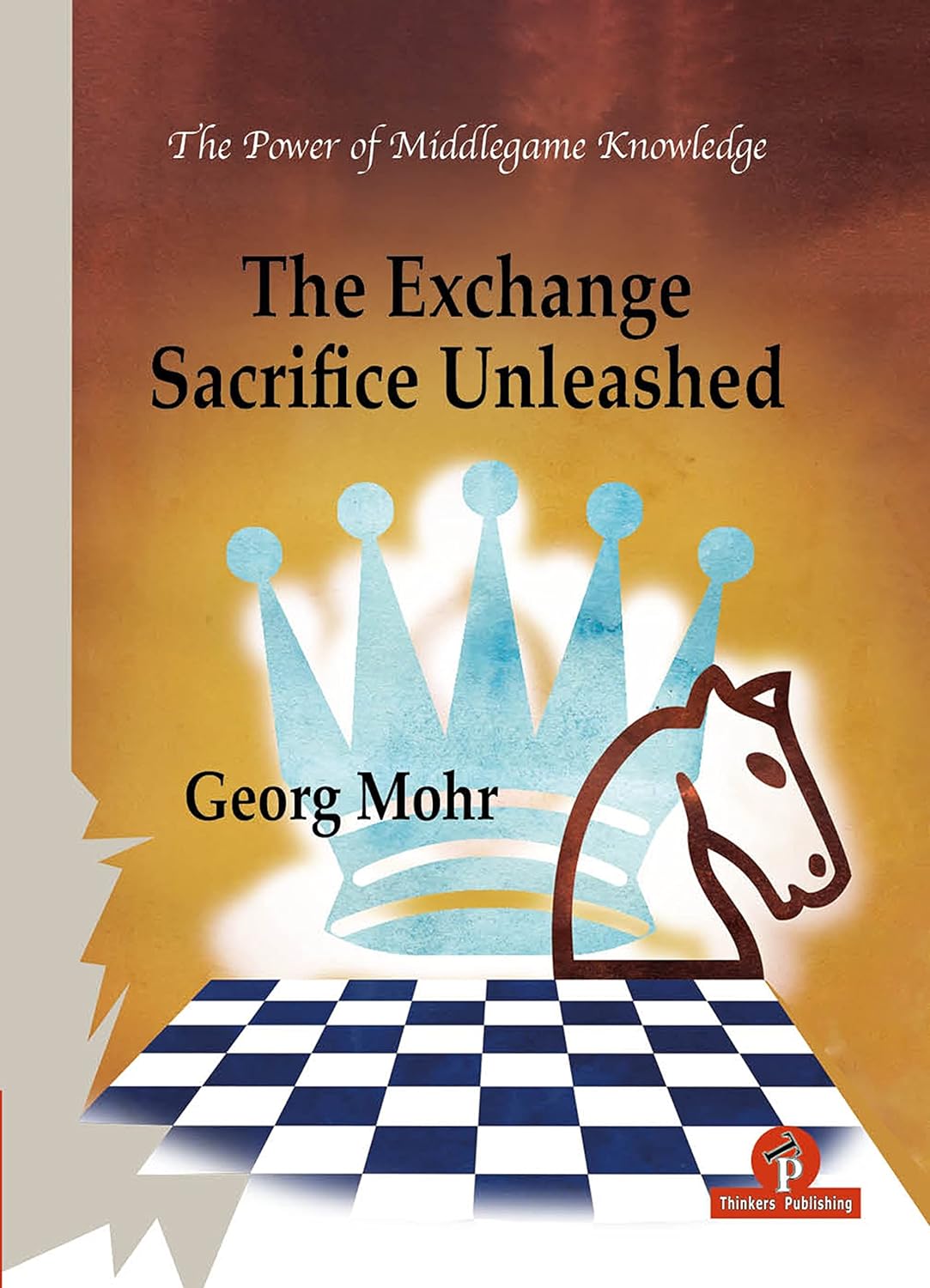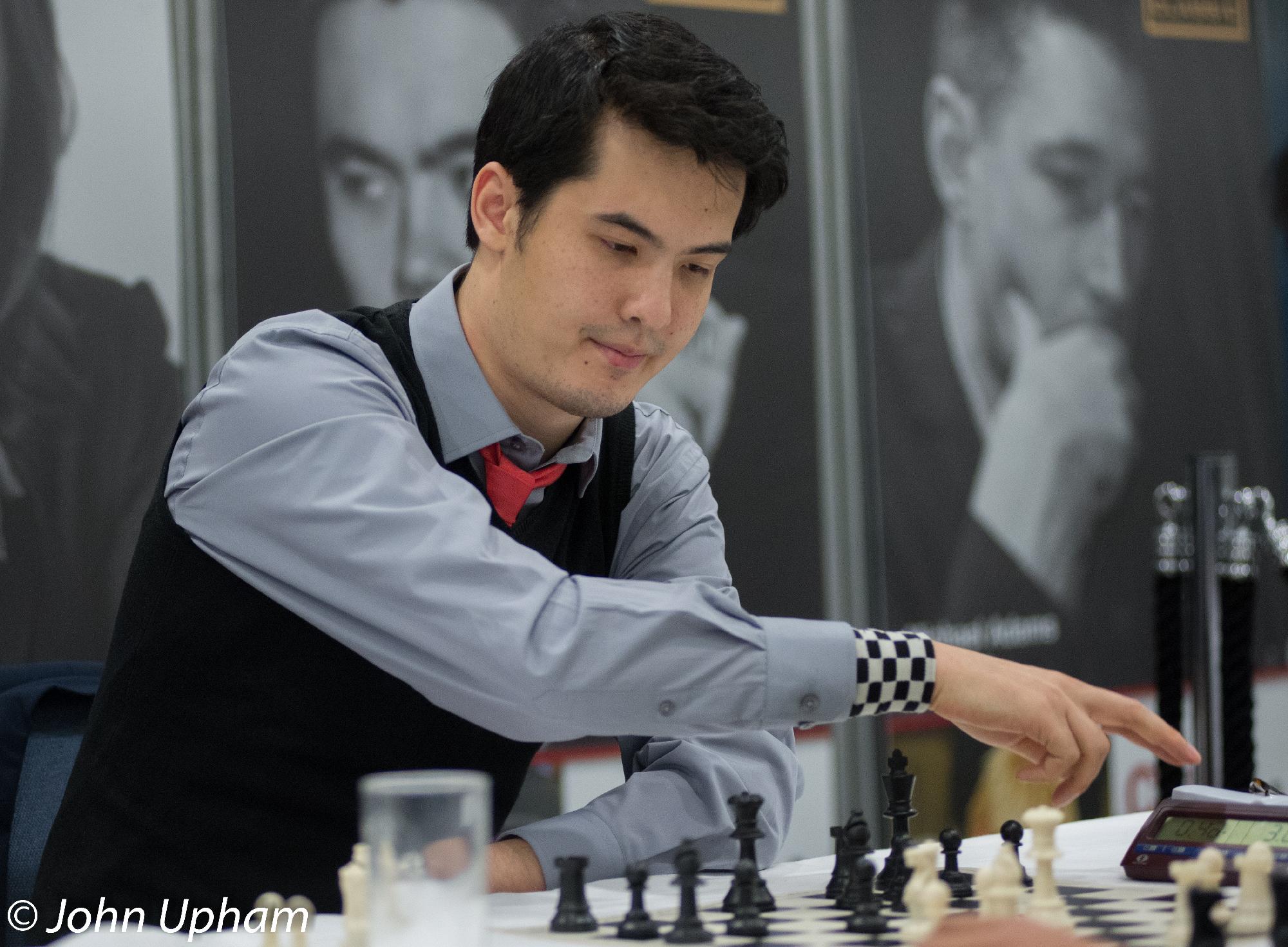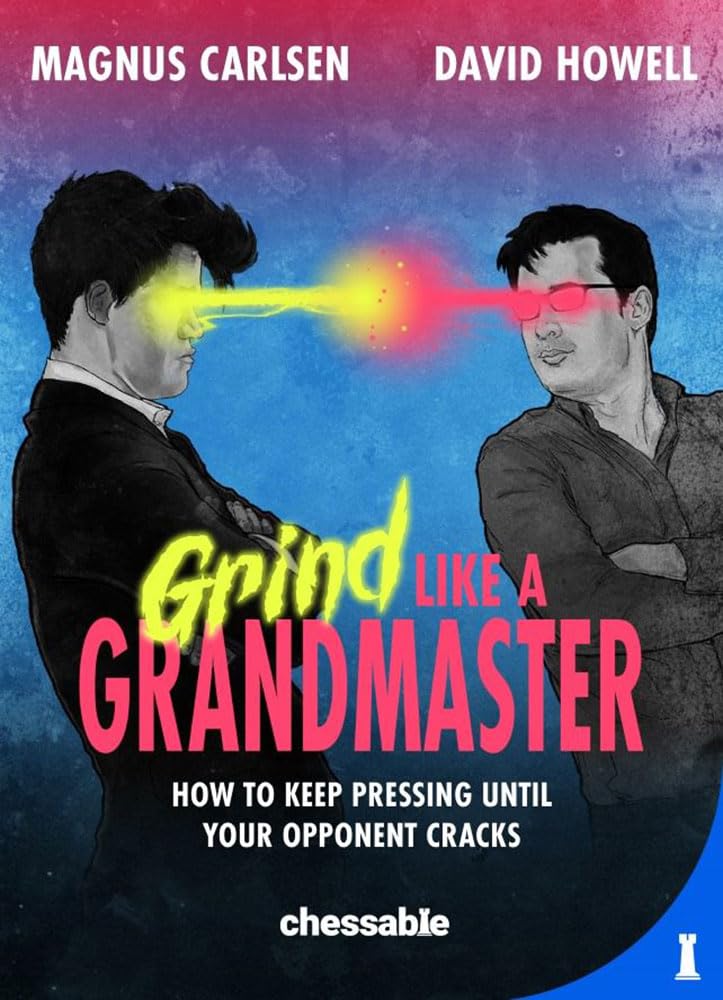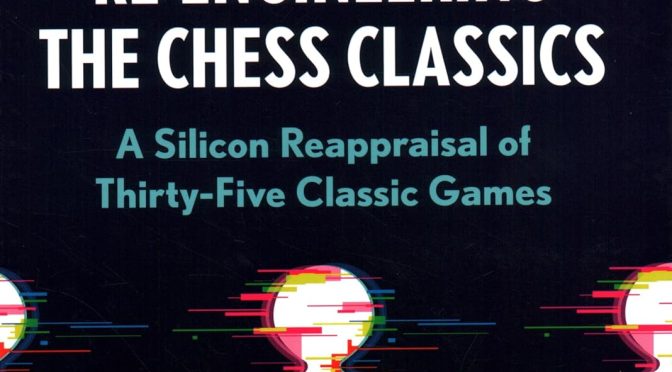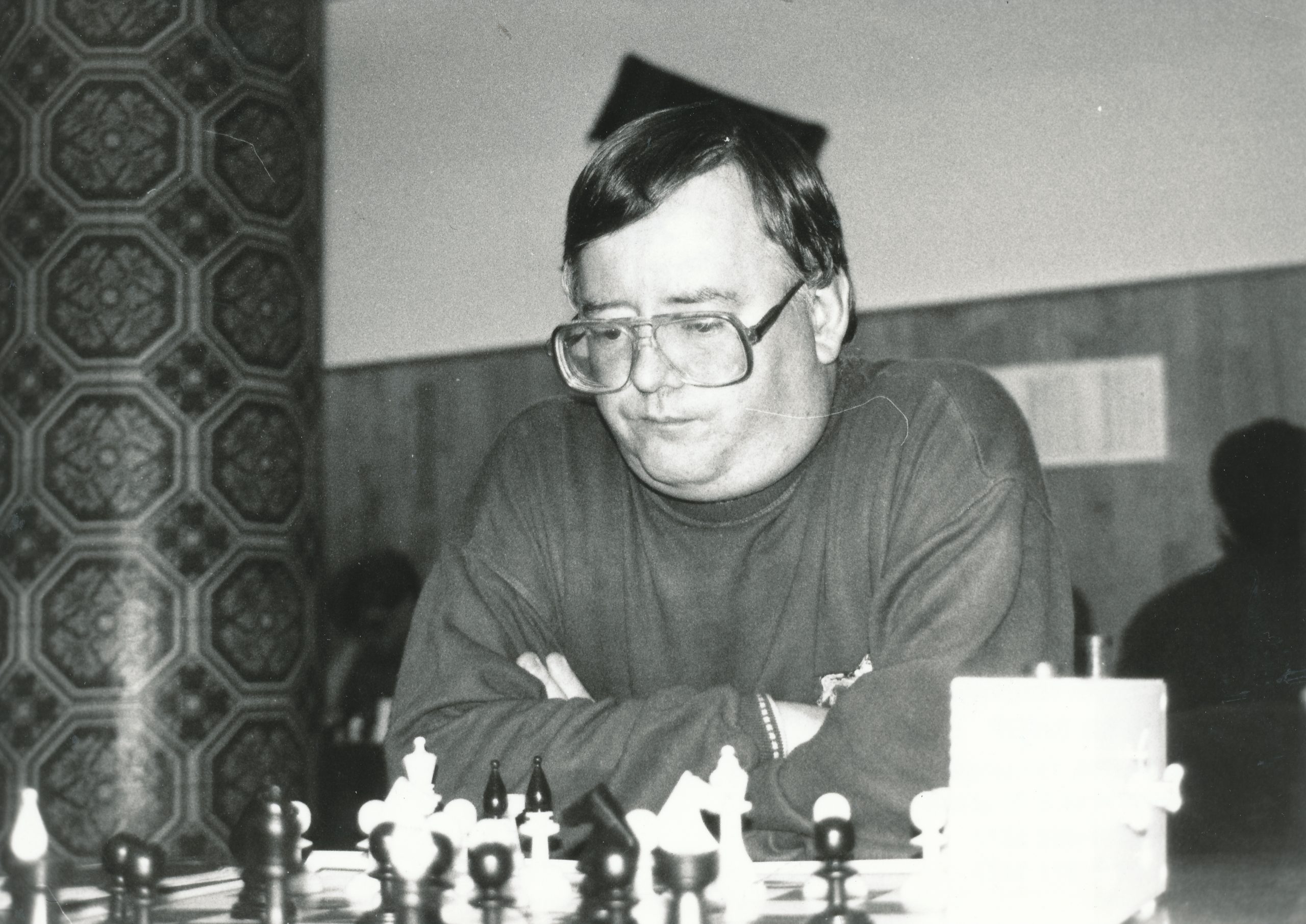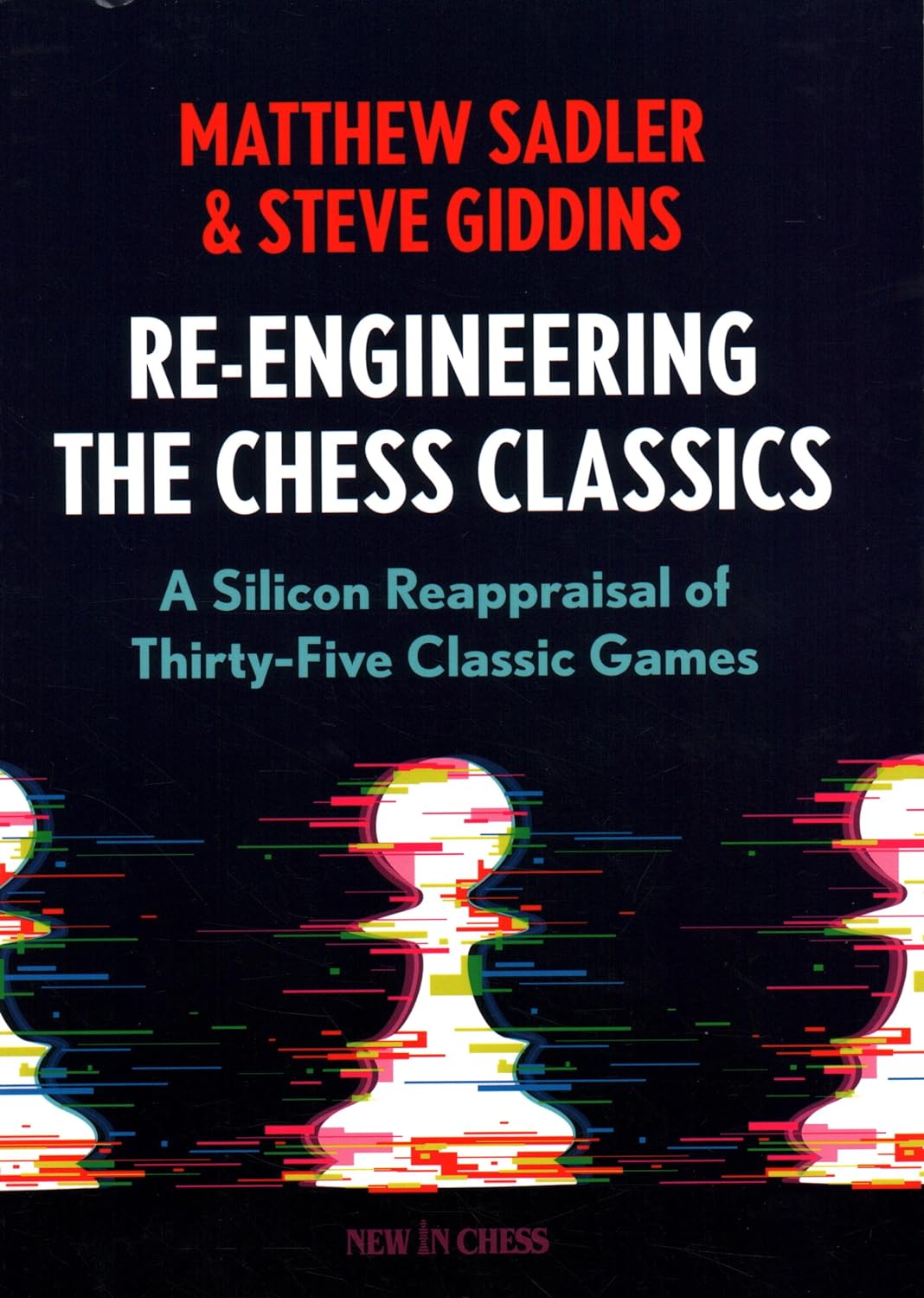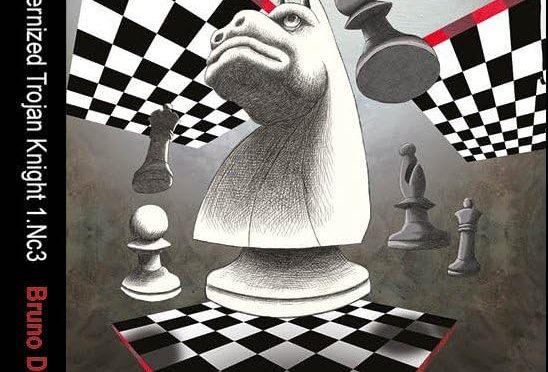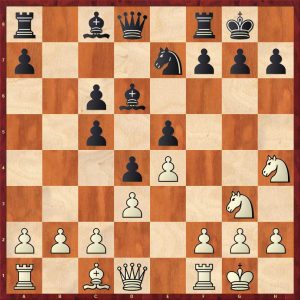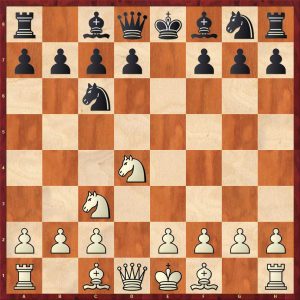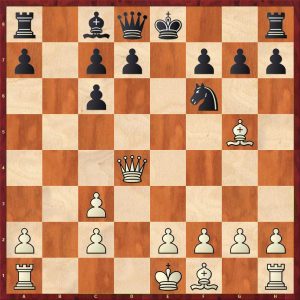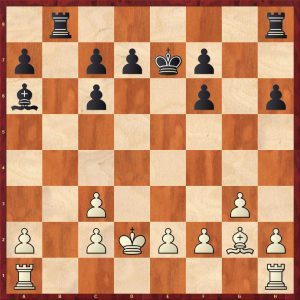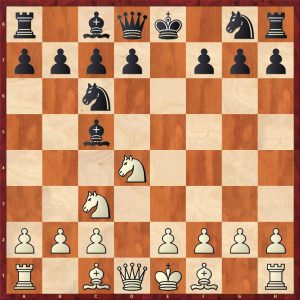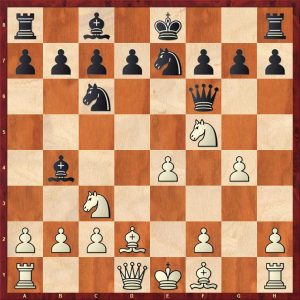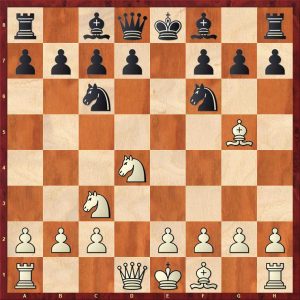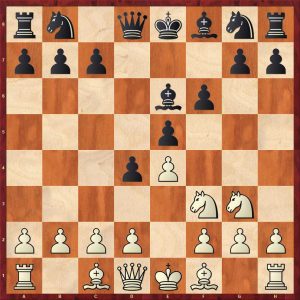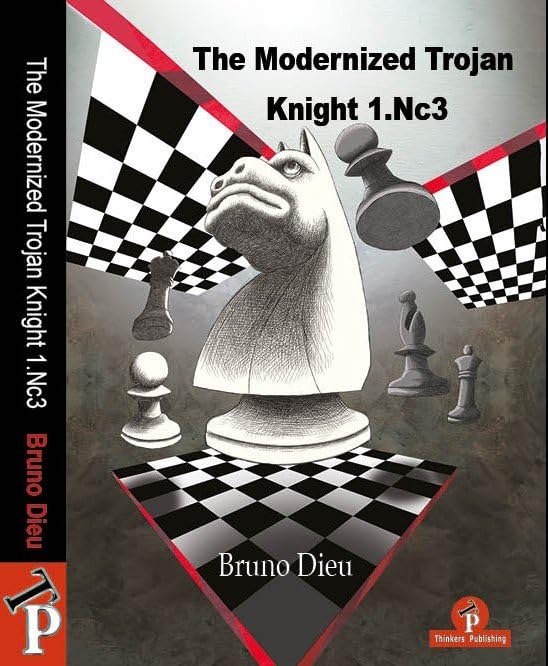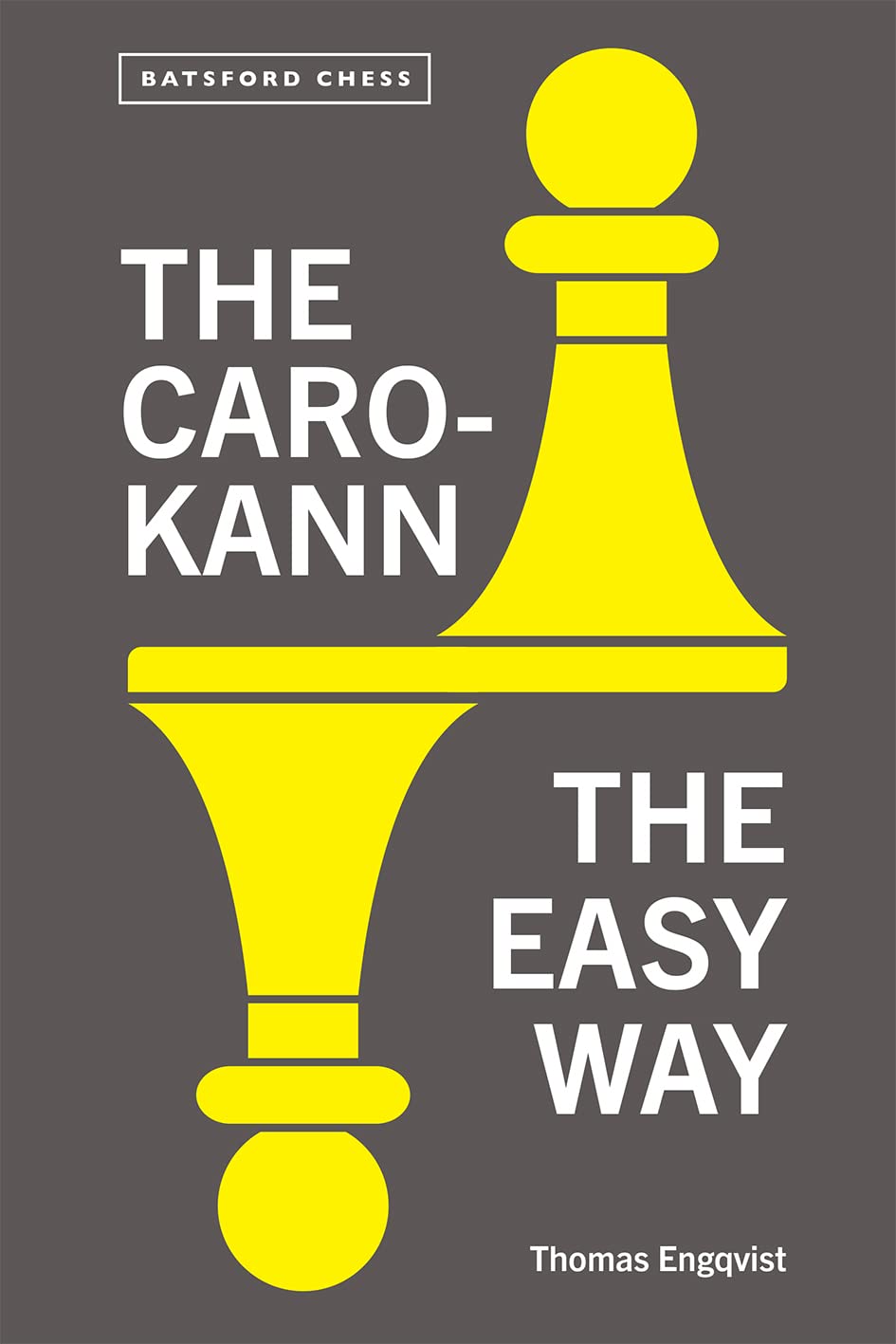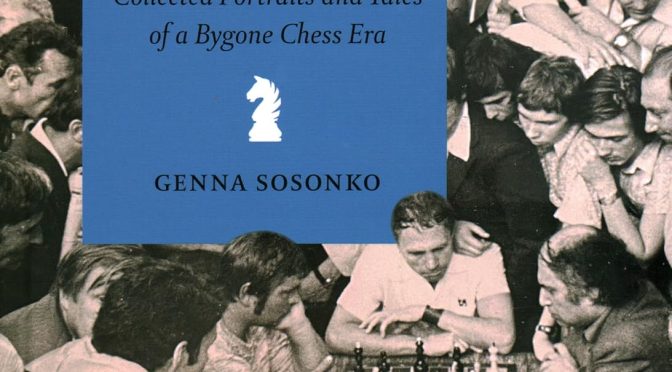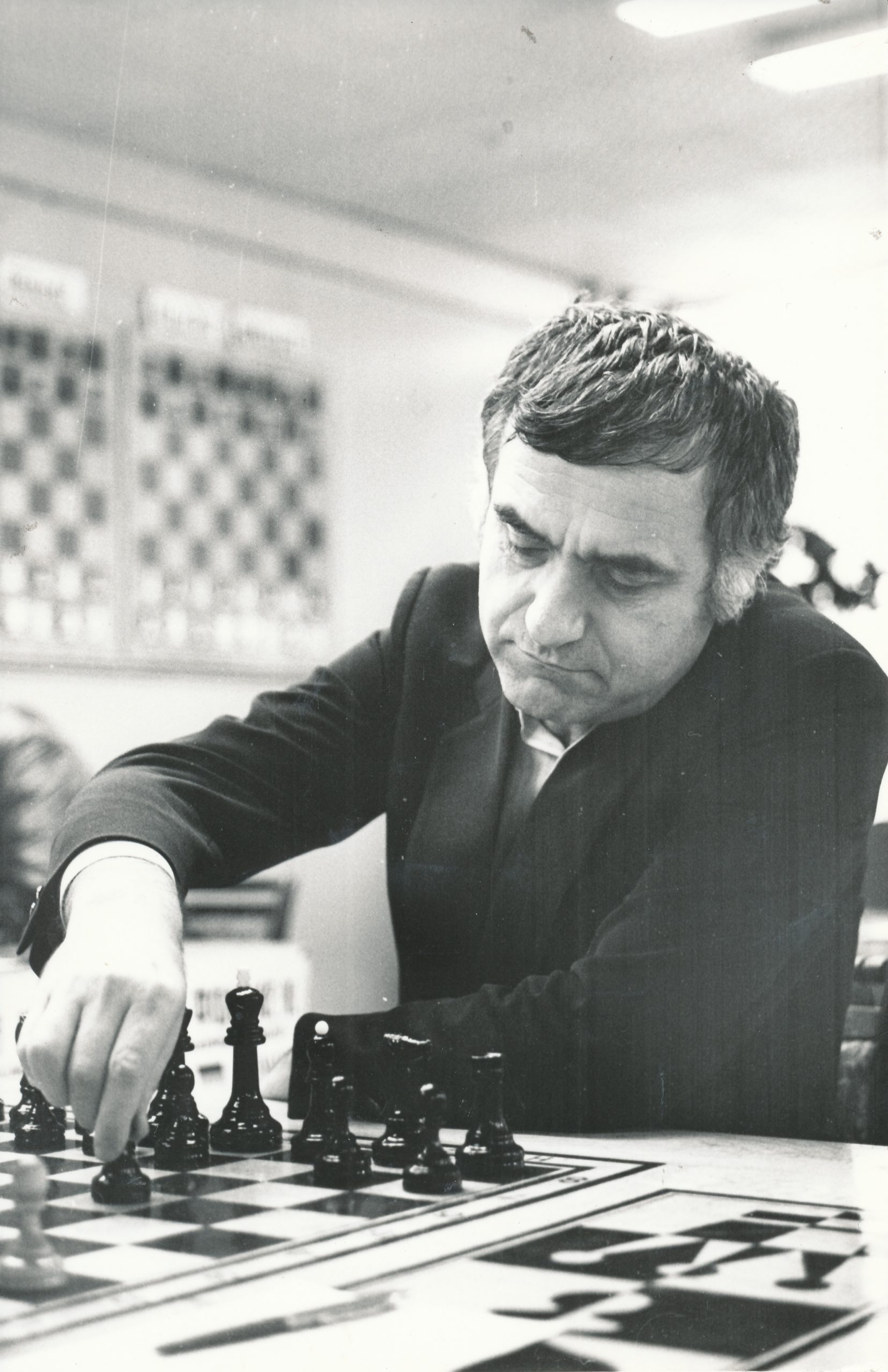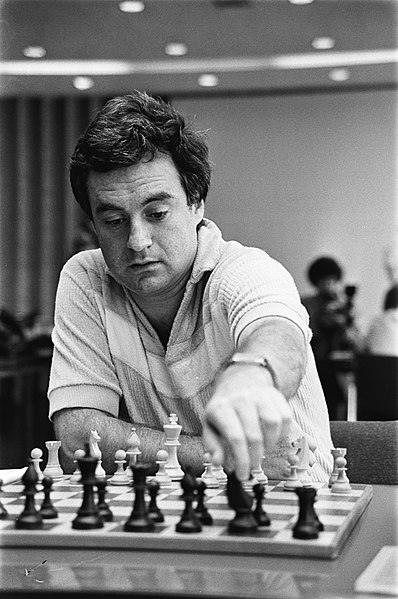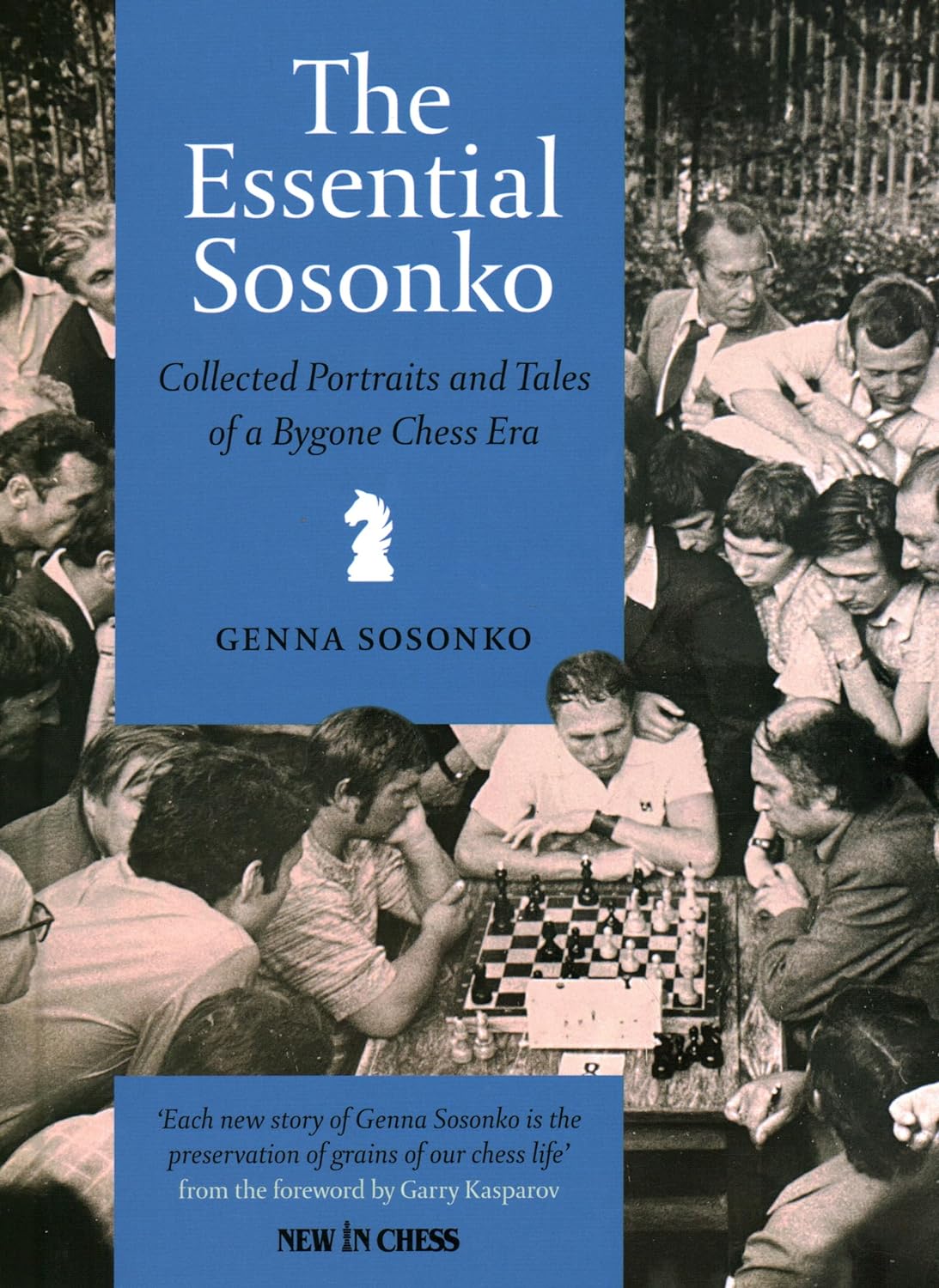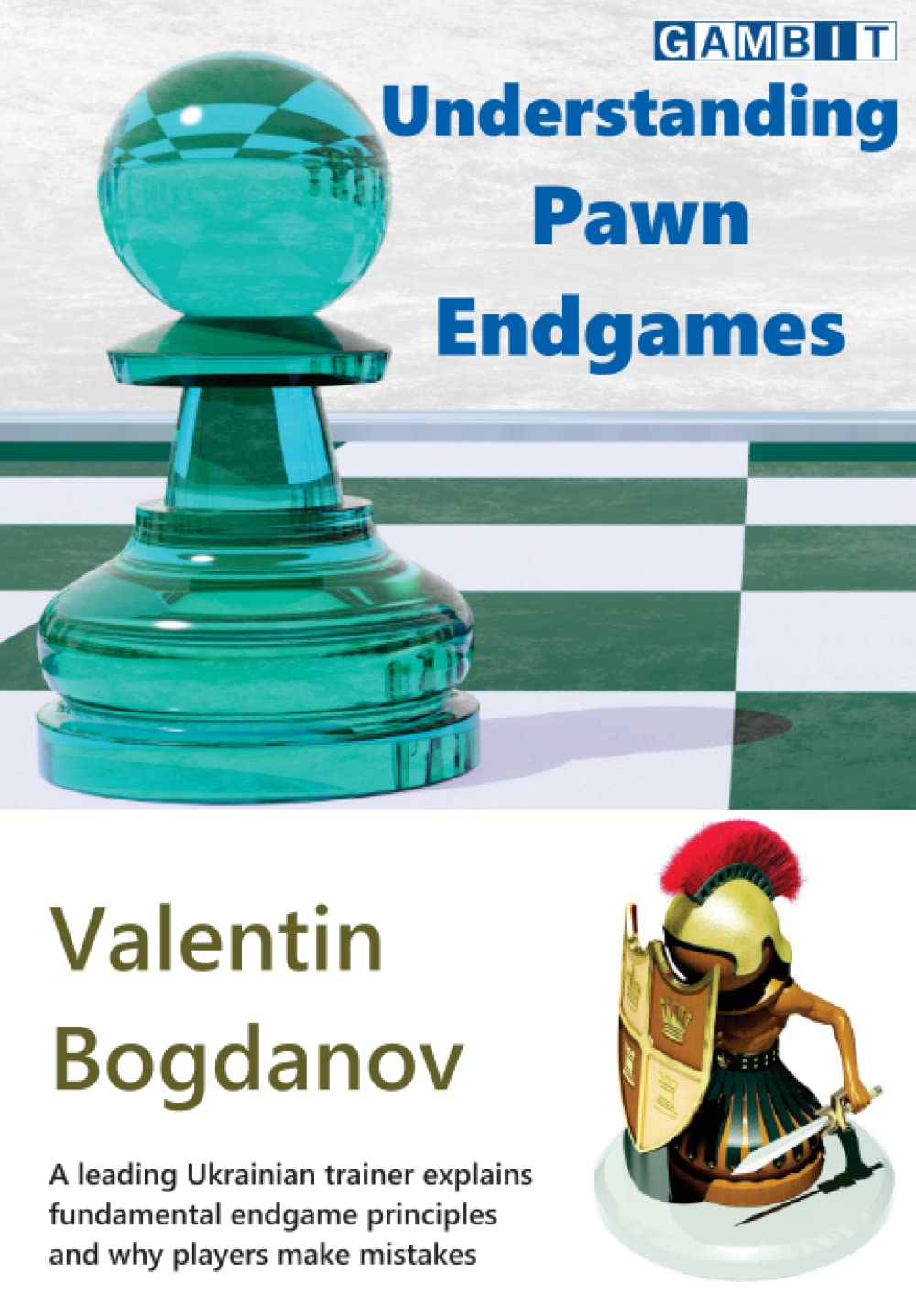 Understanding Pawn Endgames: Valentin Bogdanov
Understanding Pawn Endgames: Valentin Bogdanov
From the publisher, Gambit Publications “Understanding the endgame is fundamental to playing good chess, and at its heart lie positions where just kings and pawns remain on the board.
Even when a pawn ending is not actually reached, the players must often assess ones that could arise from an exchange of pieces. And an error calculating a pawn ending is normally fatal. Questions of pawn-structure, and thus decisions made early in the game, can be fully understood only when we appreciate how they impact the possible pawn endings.
This book takes a practical angle, so is the perfect complement to Secrets of Pawn Endings, which examines their theory in detail. Experienced trainer Bogdanov examines a wealth of pawn endings where strong players made significant errors, and draws lessons and rules of thumb from them.
While we are enjoying the entertaining material in this book, we are painlessly absorbing endgame principles and improving our intuitive decision-making skills. We learn how to calculate and identify key positional elements, and appreciate the beautiful tactics and paradoxical ideas that are unique to the world of pawns.
The Nunn Convention is used throughout the book, and all the material has been checked in detail with modern NNUE-based engines with access to seven-man tablebases.”
International Master Valentin Bogdanov has vast experience as a chess trainer, and is from Ukraine. His pupils include grandmasters Moskalenko, Savchenko and Drozdovsky, and he has acted as a second for the well-known grandmaster and theoretician Viacheslav Eingorn since the late 1970s.
For 50 years he has been a teacher at the chess school in Odesa (Ukraine), and in 2016 won the European Over-65 Championship. In the same year he also qualified as an International Arbiter and has since then officiated over a great many chess events in his country.
This is his fourth book for Gambit.

Before we start our review it is worth watching this video preview from John Nunn and Gambit Publications:
This is a excellent book that has an emphasis on practical king and pawn endgames. All the examples are taken from 1981 onwards which means that the reader will see novel positions rather than a rehash of old favourites. The other fresh approach is the structure of the ten chapters based on themes rather than the number of pawns. This book is not for beginners or very inexperienced club players as it assumes a basic knowledge of elementary pawn endgames. It is aimed at 1750+ chess enthusiasts but ambitious lower rated readers will benefit from some of the easier examples. The more difficult positions will tax GMs. This book would be ideal material for a coach for training purposes to give the students a toolkit of ideas.
The chapter structure is as follows:
Chapter 1: Obvious Errors
Chapter 2: Breakthrough
Chapter 3: Zugzwang
Chapter 4: Opposition and Corresponding Squares
Chapter 5:Spare Tempi
Chapter 6: The Fight To Promote
Chapter 7: Changing the Pawn-Structure
Chapter 8: Calculation
Chapter 9: Evaluating the Resulting Queen Endings
Chapter 10: Positional Play
The reviewer will show examples distributed from all the chapters to give the reader a flavour of this instructional idyll.
Chapter 1: Obvious Errors
Position 21
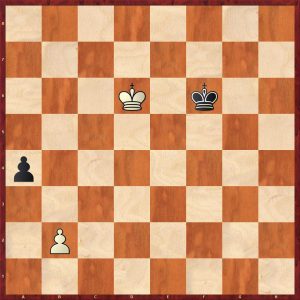
White, Movsesian, a 2600+ GM played the dreadful blunder 59.Kc6? (throwing away a totally winning pawn endgame. 59.Kc5! wins as the threat is to play Kb4 which will preserve white’s remaining pawn as a b-pawn with the king in front and a reserve tempo move of b3, if 59…a3 60.bxa3! Ke7 61. Kc6 Kd8 62.Kb7! and the a-pawn promotes) 59…Ke6 60.Kb5 reaching this position:
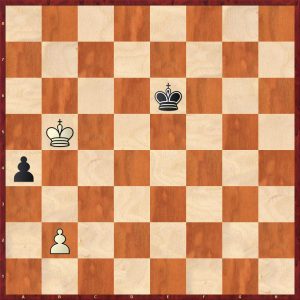
Now, black drew with a common, but nevertheless neat idea:
60…a3! (transforming white’s pawn into a now useless a-pawn, as black’s king is just close enough to draw) 61.bxa3! Kd7! 62.Kb6 Kc8! reaching c8 with an elementary draw
Position 22
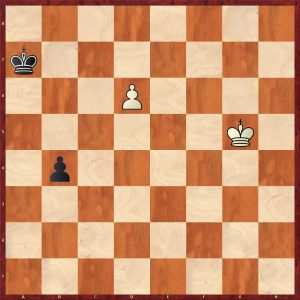
This position is simpler than the last one.
Both players are rated well over 2500!
Black is to play here and after the obvious 83..b3, it is crystal clear to a novice player that both sides are going to promote with a draw, even though white promotes first. If 83…Kb7 trying to impede the advance of the d-pawn, white can play 84.Kf6 making sure that the d-pawn does promote with a stone cold draw.
Black played 83…Kb8? (Placing the king on the back rank presumably in the mistaken belief that he could stop the white pawn from promoting. 84.Kf6! b3 85.d7! followed by promoting with check, winning the game, thanks to black’s foolish Kb8 move!
Chapter 2: Breakthrough
This is a key topic in pawn endings and there are many beautiful examples. Sometimes, the threat of a breakthrough can limit the opponent’s king manoeuvres, thus winning the game indirectly.
Once a player has seen some pretty examples of this theme, they are never forgotten.
Position 33
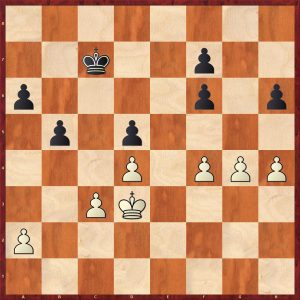
White missed a chance for a standard breakthrough against black’s mangled pawns viz: 35.h5 Kd7 36.g5 reaching this key position:
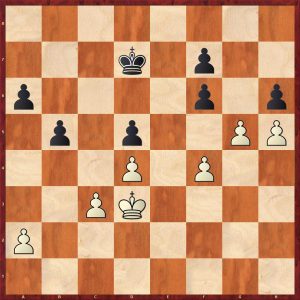
Now there are two main variations:
A) 36…Ke8 37.gxh6! Kf8 38.Kc2 Kg8 39.Kb3
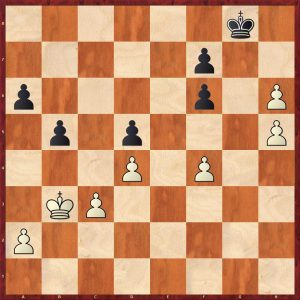
and white wins the race to get a new queen for example: 39… Kh7 (39…a5 40.a4 breaks through) 40.Kb4 Kxh6 41.Kc5 Kxh5 42.Kxd5 Kg4 43.Kc6 Kxf4 44.d5 wins easily
B) 36…fxg5 37.fxg5! Ke8 38.gxh6! Kf8 39.Ke3
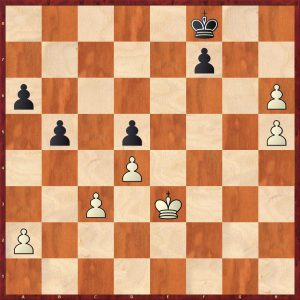
39…Kg8 40.Kf4 Kh7 41.Kg5 winning
Back to the original position: white played 35.Kc2? f5! 36.g5 h5! 37. Kb3 draw agreed
Position 36
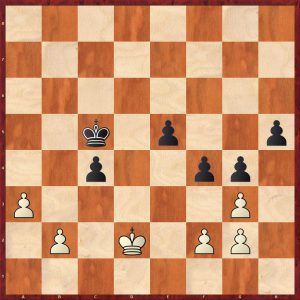
White has an outside passed a-pawn and was probably dreaming of swapping his a-pawn for black’s c-pawn, leaving black to deal with an outside passed b-pawn, while white’s king mops up the king side pawns winning the game, hence his next move 53.Kc3?
A more alert white player would have spotted the danger of black’s advanced kingside pawns. It might look as though black can only create a passed e-pawn as his extra kingside pawn is on the e-file, but this an illusion: black can now breakthrough creating a pawn configuration that ties down the white king permanently, thus allowing black to win on the queenside. Once seen never forgotten!
53…e4! would have won threatening e3 or f3 winning, if 54.Kd2 f3! 55.gxf3 exf3 reaching a position similar to the game
53…Kd5? 54.a4? Pursing his faulty plan, 54.Kd2! would have drawn 54…e4! 55.Kd2 (55.gxf4 allows an immediate breakthrough 55…e3! 56.fxe3 h4! and the h-pawn queens) 55…f3! 56.gxf3 exf3! reaching this position:
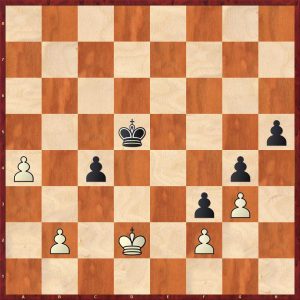
White’s king is tied down and cannot cross to the c-file as this allows a decisive breakthrough of h4! Therefore black’s king can invade on the queenside with decisive gains viz: 57.Ke3 Kc5 58.Ke4 Kb4 59.Kd4 Kxa4 60.Kxc4 h4 61.b3+ Ka3 62.gxh4 g3! 63.Kd4 0-1
Position 38
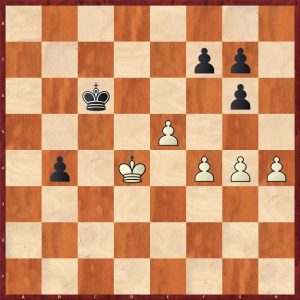
White missed the elegant 59.f5! b3 60.Kc3! Kd5 61.e6 fxe6 62.f6 62…gxf6 63.h5! and the h-pawn queens.
White played 59.Kc4? and still won after black missed a draw.
Chapter 3: Zugzwang
Here is a subtle example, but nevertheless didactic:
Position 56
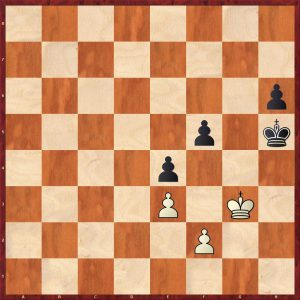
This ending looks like an easy win for black with a extra passed pawn. But be careful!
Black played the natural 52…Kg5? which throws away the win. This won’t become clear for a few moves. 52…Kg6! wins
53.f4+ exf3 54.Kxf3! h5 55.Kg3! reaching a position of mutual zugzwang:
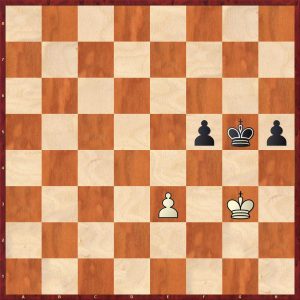
If black had played 52…Kg6, white would be on move here and would be lost as 56.Kh3 or 56.Kf3 would be met by 56…h4 and any other king move would allow 56…Kg4 winning easily.
The game continued 55…h4+ 56.Kf3! Kh5 57.Kf4! Kh6 58.e4! h3 59.Kg3 drawn
Chapter 4: Opposition and Corresponding Squares
The introduction to this chapter is excellent explaining the concept of the opposition, the distant opposition, corresponding squares and triangulation.
Here is a simple example from a game between players rated in the 2400s:
Position 70
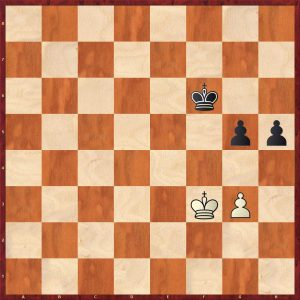
White played the “active” 55.Ke4? (55.Kf2! maintaining the distant opposition draws a textbook ending) 55…Ke6! winning the opposition 56. Kf3 Kd5 bypassing 57.Ke3 Ke5! 58.Kf3 Kd4 (another bypass) 59.Kf2 Kd3 60.Kf3 g4+ and white threw in the towel
Chapter 5: Spare Tempi
Position 105
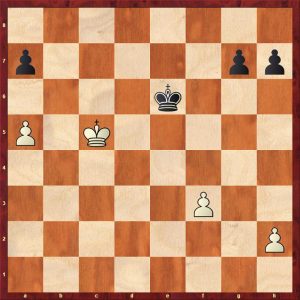
The author’s explanation of black’s defensive plan here is pithy and pedagogical:
“Black’s defensive plan is to let White take the a7-pawn and then block the king in permanently in front of his own a-pawn. For this idea to work, Black needs a spare tempo on the kingside, as otherwise he will be forced to release the white king from its a-file prison. Immediately fixing the kingside pawns by 43…g5!? secures two such tempi and is the simplest path to a draw viz: 44.Kc6 Ke5 45.Kb7 Kd6! 46.Kxa7 Kc7! 47.h3 h6 48.a6 h5!”
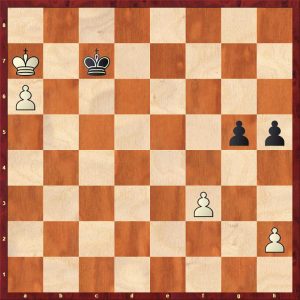
White does not enough tempi to release his imprisoned king.
In practice Black played 43…Kd7 which retains the draw but mis-defended on the next move and lost.
Interestingly, I had a similar position in a game many decades ago with reversed flanks. I won the game and proudly showed the endgame to a friend, who promptly demonstrated a drawing plan for my opponent identical to this game.
Chapter 6: The Fight To Promote
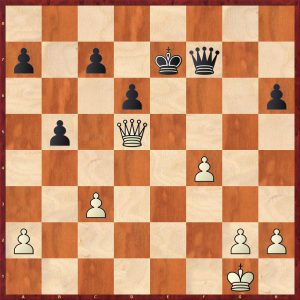
White totally mis-assessed the resulting king and pawn endgame after the exchange of queens here. He probably thought that his connected passed pawns on the kingside were at least a match for black’s queenside majority.
34.Qxf7+? Kxf7 35.g4 a5 36.Kf2 c5 37.Ke3 d5 38.Kd3 a5 reaching this position:
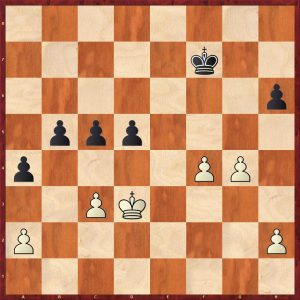
What white missed was that black can create a passed a-pawn and a passed d-pawn (separated by two files) and these pawns can reach the fifth rank safely which means they are unstoppable.
White played the desperate 39.c4 dxc4+ (39…bxc4+ also wins) 40.Kc3 a3 41.h4 Kg6 42.g5 h5 43.Kd2 b4 44.Kc2 c3 white resigned
7: Changing the Pawn-Structure
This is one of the most complex chapters and the hardest to evaluate in practice.
The reviewer will show an excellent example to show a typical idea:
Position 153
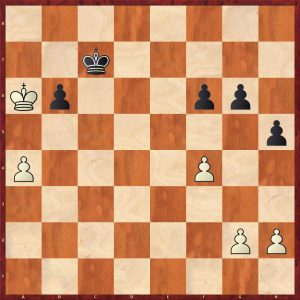
Black played the automatic 46…Kc6? White won with a well known technique exploiting the fact that his king is one move ahead in the race to the kingside 47.h4! f5 48.g3! Kc5 (48…Kc7 49.Ka7 Kc6 50.Kb8 wins) 49.Kb7! and black resigned because of this variation: 49…b5 50.axb5 Kxb5 51.Kc7 Kc4 52.Kd6 Kd3 53.Ke6 Ke3 54.Kf6 Kf3 55.Kxg6! Kxg3
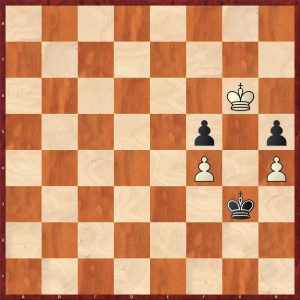
56.Kg5! winning
Going back to the original position:

Instead of the passive 46…Kc6? black can actively rearrange the kingside pawn structure to draw as follows:
46…h4! 47.Ka7 f5 48.h3
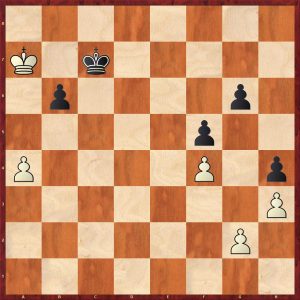
48…Kc6! 49.Kb8 Kc5 50.Kc7 Kb4 51.Kxb6 Kxa4 52.Kc5 Kb3! 53.Kd4 Kc2! 54. Ke5 Kd3 55.Kf6 Ke4 56.Kxg6 Kxf4! 57.Kf6!
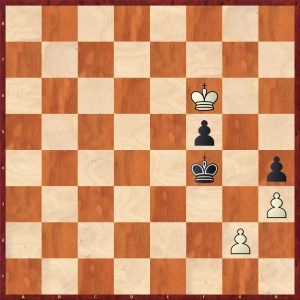
Black draws here with 57…Ke4! 58.Kg5 Ke5! 59.Kxh4 Kf4! 60.g4 (60.g3 Ke3 draws) 60…Ke5! 61.g5 f4! 62.Kg4 Ke4! leads to a drawn Q + h-pawn v Q endgame
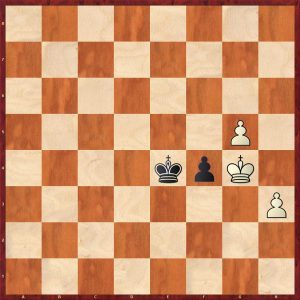
Position 158
The reviewer loves this endgame.
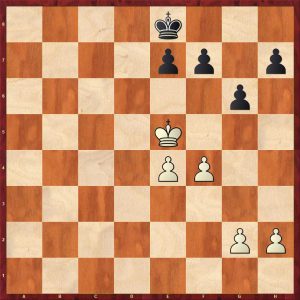
This king and pawn ending is clearly drawn but white is pressing with a more advanced king. White played 50.h4 setting a subtle trap. 50…h5? losing, incredible to believe but it is true. 50…Kd7 draws, for example 51.g4 f6+ 52.Kd5 e6+ 53.Kc5 h6 54. e5 fxe5 55.fxe5 Kc7 seizing the opposition and drawing 51.f5! f6+ 52.Ke6! gxf5
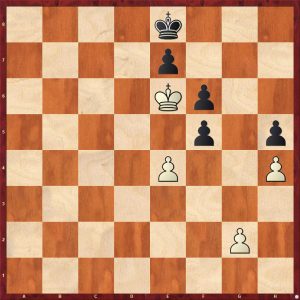
Now white played 53. e5! which had been completed missed by black (automatic recapture syndrome) 53… fxe5 54.Kxe5! Kd7 55.Kxf5! Kd6 56.Kg5 Ke5 57.Kxh5! Kf4
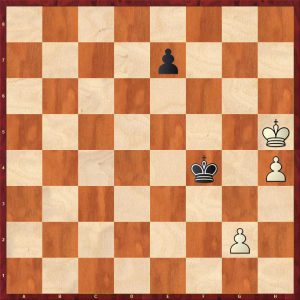
Now white can enter a winning queen endgame with 58.Kg6! e5 59.h5! e4 60.h6! e3 61.h7! e2! 62.h8Q e1Q
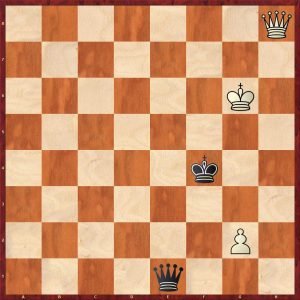
This looks drawn as the white g-pawn is only on the second rank and the black king is close to it. However, white has a series of checks to exploit the poor position of the black pieces viz:
63. Qb8+ Kg4 64. Qc8+ Kf4 (64…Kg3 65.Qh3! is the same as the game) 65. Qf5+ Kg3 66.Qh3+ Ke5 67.g4!
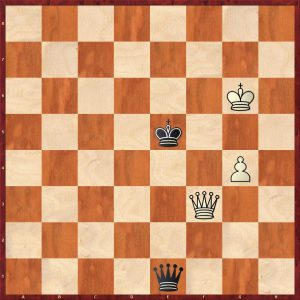
Surprisingly this is a tablebase win even though the g-pawn is only on the fourth rank. Looking more closely at the position, black’s pieces are badly placed with the king interfering with the queen. If the black king was in the south west corner, he would draw.
Gelfand did win this game about 50 moves later after mistakes by both sides.
Chapter 8: Calculation
Clearly this is absolutely critical in king and pawn endings.
Here is a relatively simple example:
Position 172
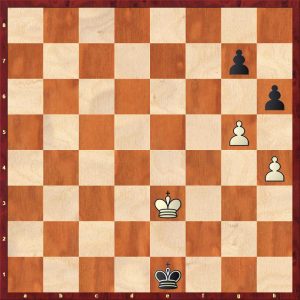
Black played the obvious exchange 47…hxg5? which loses trivially 48.hxg5! Kf1 49.Kf3! Kg1 50.Kg3 (50.g6 Kh2 51.Kg4! also wins) 50…Kg1 51.g6! Black resigned as white’s king travels to f7 and black’s cannot get to h6 in time.
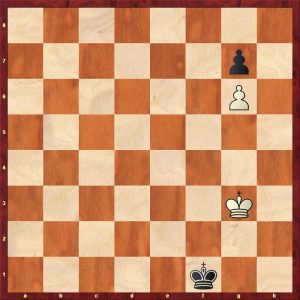
Going back to the start:

Black can draw with 47…h5! After 48.g6 viz:
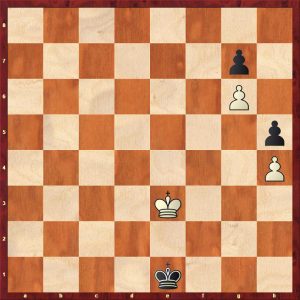
As soon as white plays Kxh5, black will answer Kf4 stalemate!
If white goes after the g-pawn, black draws by going after the h-pawn, for example 48…Kf1 49.Kf4 Kg2 50.Ke5 Kh3 51.Ke6 Kxh4 52.Kf7 Kg3 53.Kg7 h4 54.Kf6 h3 55.g7 h2 56.g8Q+ Kf2 drawing
Chapter 9: Evaluating the Resulting Queen Endings
The introduction to this chapter by the author is a superb summary of the intricacies of these transitions. The reviewer has already given an example from Chapter 7 (position 158), so I will leave the reader to buy the book to sample this chapter.
Chapter 10: Positional Play
Position 259
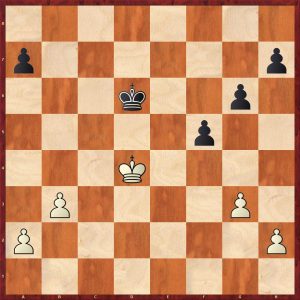
This looks very difficult for black as not only does white have a potential outside passed pawn but also a better king. He played 52…Kc6? and lost. Buy the book to find out how black can draw or work it for yourself!
In summary, this is a really good book and close study will reap rewards. The book is very well laid out and is easy to read with lots of diagrams. Thoroughly recommended.
FM Richard Webb, Chineham, Hampshire, 30th May 2021

Here is a pdf extract from Everyman
Book Details :
- Hardcover : 192 pages
- Publisher: Gambit Publications Ltd (16 Sept. 2020)
- Language: English
- ISBN-10: 1911465597
- ISBN-13: 978-1911465591
- Product Dimensions: 17.15 x 1.52 x 24.77 cm
Official web site of Gambit Publications Ltd.


